




The Grad Laws PG. 30 + The Only Cover Letter Guide You’ll Ever Need PG. 24 Snatching Wigs & Booking Gigs PG. 16 MAY 2023
Need a summer job? Apply at Dominos.com or stop by the store

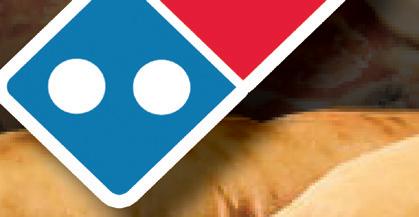












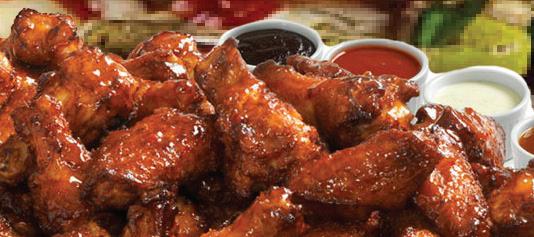



















Part-time, full-time job openings with VERY flexible schedules!












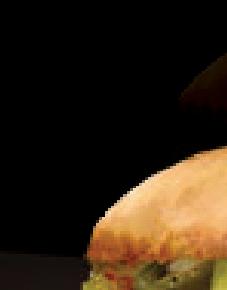






Domino’sTM SUN-THURS: 10AM - 2AM • FRI-SAT: 10AM - 3AM WE MAKE ORDERING EASY! CALL DIRECT OR CHOOSE YOUR ONLINE OR MOBILE DEVICE 215-662-1400 4438 Chestnut St. 215-557-0940 401 N. 21st St. OPEN LATE & LATE NITE DELIVERY
Dominos.com or stop by the store
full-time job
with VERY flexible schedules! Domino’sTM SUN-THURS: 10AM - 2AM • FRI-SAT: 10AM - 3AM WE MAKE ORDERING EASY! CALL DIRECT OR CHOOSE YOUR ONLINE OR MOBILE DEVICE 215-662-1400 4438 Chestnut St. 215-557-0940 401 N. 21st St. OPEN LATE & LATE NITE DELIVERY
Need a summer job? Apply at
Part-time,
openings
MAY
ON THE COVER
This hot pink Longchamp is a stand–in for all of our first adult bags, chock–full of everything you need to survive out in the real world, and then some.
EXECUTIVE BOARD
Walden Green, Editor–in–Chief green@34st.com
Arielle Stanger, Print Managing Editor stanger@34st.com
Alana Bess, Digital Managing Editor bess@34st.com
Collin Wang, Design Editor wangc@34st.com
EDITORS
Avalon Hinchman, Features Editor
Jean Paik, Features Editor
Natalia Castillo, Assignments Editor
Kate Ratner, Assignments Editor
Anna O'Neill–Dietel, Focus Editor
Naima Small, Style Editor
Norah Rami, Ego Editor
Hannah Sung, Music Editor
Irma Kiss, Arts Editor
Weike Li, Film & TV Editor
Rachel Zhang, Multimedia Editor
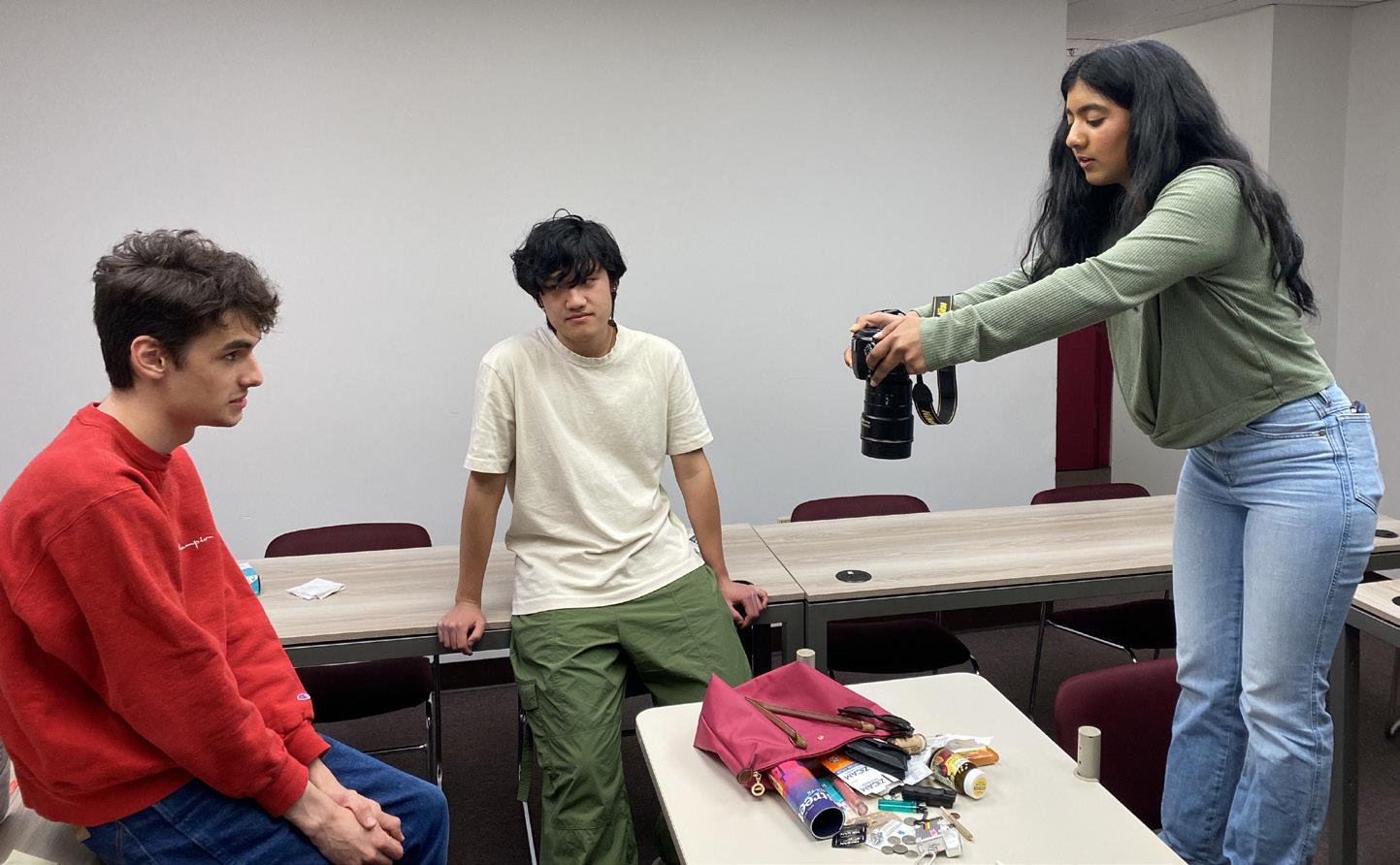
Kayla Cotter, Social Media Editor
THIS ISSUE
Julia Fischer, Copy Editor Deputy Design Editors
Wei–An Jin, Ani Nguyen Le, Sophia Liu Design Associates
Heaven Cross, Cynthia Dong, Raymond Feng, Katrina Itona, Erin Ma, Janine Navalta
STAFF
Features Staff Writers
Katie Bartlett, Delaney Parks, Sejal Sangani Focus Beat Writers
LAND ACKNOWLEDGEMENT
The Land on which the office of The Daily Pennsylvanian stands is a part of the homeland and territory of the Lenni–Lenape people. We affirm Indigenous sovereignty and will work to hold the DP and the University of Pennsylvania more accountable to the needs of Indigenous people.
CONTACTING 34th STREET MAGAZINE
If you have questions, comments, complaints or letters to the editor, email Walden Green, Editor–in–Chief, at green@34st.com You can also call us at (215) 422–4640. www.34st.com © 2023 34th Street Magazine, The Daily Pennsylvanian, Inc. No part may be reproduced in whole or in part without the express, written consent of the editors. All rights reserved.
anatomy queen
Leo Biehl, Sophia Rosser
Style Beat Writers
Emma Halper, Alexandra Kanan, Claire Kim, Felicitas Tananibe
Music Beat Writers
Kelly Cho, Halla Elkhwad, Ryanne Mills, Olivia Reynolds, Mehreen Syed
Arts Beat Writers
Jojo Buccini, Jessa Glassman, Giulia Noto La Diega
Film & TV Beat Writers
Mollie Benn, Kayla Cotter, Emma Marks, Isaac Pollock, Catherine Sorrentino
Ego Beat Writers
Sophie Barkan, Noah Goldfischer, Ella Sohn, Vikki Xu
Staff Writers
Morgan Crawford, Heaven Cross, Angele
Diamacoune, Rayan Jawa, Enne Kim, Jules
Lingenfelter, Luiza Louback, Dianna Trujillo
Magdalena, Yeeun Yoo
Audience Engagement Associates
Annie Bingle, Ivanna Dudych, Yamila Frej, Lauren Pantzer, Felicitas Tananibe, Liv Yun
CAMPUS 5 Stuck at the Starting Line 7 Ego of the Month: Emily White CITY 14 STY Testing at Penn is Easier (& Harder) Than You Think 16 Snatching Wigs & Booking Gigs #ADULTING 24 The Only Cover Letter You’ll Ever Need 28 Ask Arielle 30 The Grad Laws 36 Six Movies About Academia, Angst, & Adulting 38 The Friend We Find in Existential Modern Art CULTURE 46 Practically Picture–Perfect: The Problems with CGI
Contents
2023
Photos by Anna Vazhaeparambil Staging by Collin Wang
It feels cliche to begin any letter about adulting with the phrase “growing up.” I’m going to do it anyway, but here’s hoping that I can get a pass for calling myself out. At the very least, you’ll have to acknowledge my self–awareness.
Growing up, my two biggest fears were, in order: bedbugs, and my parents getting divorced. Now I’m 20, and I’ve experienced both. There was the nest I found on the underside of a pillow at a sketchy Days Inn, and the morning I woke up with a line of red bites on my leg and couldn’t rest until the whole house had been doused in flea and tick killer.

In retrospect, I should’ve had my priorities flipped; the bedbugs were small potatoes.
I’ve reiterated the circumstances of my mom and dad’s separation so many times that it’s become more of a bit, a fun story for BYOs whose specifics don’t bear repeating, especially in print. But the breakup itself was far from the hardest part of the metamorphosis my family’s undergone for more than two years now.
What was really hard was sitting in the car with my mom and crying together in the King of Prussia Mall parking lot last December. What was really hard was watching my sister dissociate at my dad’s second wedding—to someone I’m really fond of, by the way—and that was less
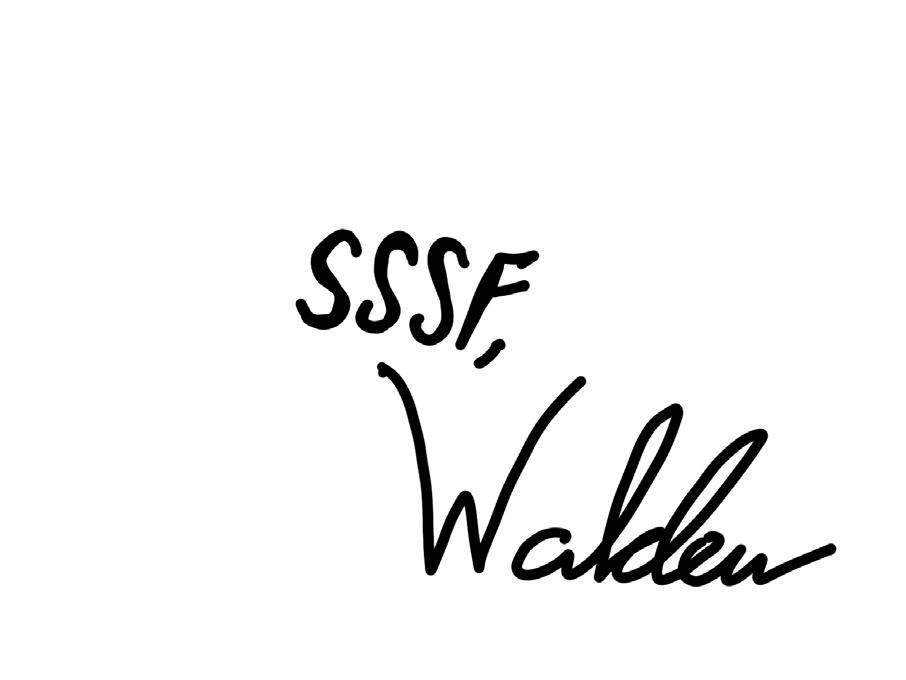
than a week ago. The ceremony was beautiful though, and, not to brag, but multiple sources said my toast was the highlight of the evening.
A running joke of mine used to be that being a child of divorce wasn’t as difficult as everyone cracked it up to be. After all, things had objectively worked out well, and I was old enough to be out of the house by the time the proverbial shit hit the fan.
All of which would be true, if divorce was a one–time thing—a lightning bolt that decisively cleaved my life into a childhood before and an adult after. Some prefer the term “uncoupling,” and I think that’s because it represents separation more truthfully, as a continuous process for everyone involved. In that way, uncoupling is very much the same as growing up.
We called this issue “34th Street Tries Adulting,” but maybe a more accurate tagline would be “34th Street Tries (and Fails) Adulting,” since there’s little here in the way of decisive success. What we have instead is a glimpse into the life of the mysterious “young adult,” who watches Girls as a cautionary tale and Frances Ha to feel comforted, who’s scared of living under capitalism yet sends out cover letter after cover letter just to be prepared, who is beginning to realize that maybe adulthood is overrated just as they begin to barrel full steam ahead towards becoming their parents.
But is there ever truly a point where we stop “growing up”? It certainly doesn’t happen in the one year after graduating from college, which is why we’re just as qualified as anyone to offer advice to the graduating senior class. This month’s data story shows that, across the four years of college, everyone’s still worried about finding a job—and they don’t get any better at filing taxes. And the questions tackled by our print editor Arielle in her inaugural advice column are relevant pretty much universally.
So I’ve decided that I don’t love calling it “growing up” at all, because it implies that there’s some cap, where you’re not aging, not becoming more “adult” anymore. Maybe we’re just growing, growing, growing, and then gone.
34 TH STREET MAGAZINE 4 LETTER FROM THE EDITOR
What does it mean to feel like an adult? We, your parents, and the scientific community at large have no idea. But if you don’t either, I can promise you’re in good company.
Stuck at the Starting Line
Engagement photos on Instgram, wedding invitations on the refrigerator, sonograms in your text messages—it just starts and doesn’t stop.
BY ELLIE SHUERT
In January, my best friend called me and told me she was pregnant. She was also getting married in less than 48 hours.
We had both known for months that she was dating the guy she wanted to marry. While catching up with her over burgers and fries in December, I became certain that come her graduation in May, she would have a ring on her finger. Anticipating her phone call, I knew that the news could be nothing less exciting than her engagement. But a baby? And a wedding? It was surreal.

MAY 2023 5 CAMPUS
I was overjoyed. One of my favorite people in the world was getting a mini–me, a chubby–cheeked baby girl to whom I would be “Aunt Ellie.” One of the most beautiful souls in the world would multiply.
But it also felt like a robbery. It wasn’t like I didn’t know this was coming, but I thought I had at least a few more months where I could be one of her top priorities. Suddenly, she had a husband and a baby to put before me. She was going to be responsible for raising a child, teaching her moral behavior and a way to make sense of our world. What a daunting, all–consuming task.
Our friendship inevitably had to change to accommodate all these new responsibilities. I’m 21, unmarried, and jobless, and I wanted my best friend to be lost just like me. And now she was on a completely different plane than I was.
I don’t think you realize you’re at this stage of life until you collide with it head on: engagement photos on Instagram, wedding invitations on the refrigerator, sonograms in your text messages. It just starts and doesn’t stop. Suddenly, I’m attending two weddings this summer and scheduling a flight to see my friend’s baby, and oh, one of my friends bought a Tesla.
So many people in my life are quickly encountering huge life changes. And if you aren’t one of the few to find the love of your life at 19 or earn enough dough to purchase a luxury vehicle at 21, it’s easy to feel like you’re standing on a racetrack with cars shooting past you at lightning speed. In the blink of an eye, you aren’t so young anymore.
Don’t get me wrong: I’m content to stay near the starting line. It’s watching everyone else zoom away that just chips at my heart a little, especially when it comes to my closest friends. If they get married, where does that leave me? How will our friendship evolve? Will it dissipate? I’m heartbroken at the thought of my ride–or–dies having to leave me in the dust just to move forward with their lives.
In facing this insecurity, I’ve become more convicted of my beliefs about friendship. A friendship that doesn’t know how to evolve probably doesn’t run that deep. During my last three years at Penn, I’ve been advised to embrace temporary friendships and be content with the four–year expiration date. It’s freeing, they say. Some friends are only for a time. You can meet new people without getting your heart all wrapped up in obligations. While meeting new peo - ple has been a great part of my experience at Penn, I’ve had trouble with this temporary mindset. My instinct is to plant and cultivate roots. Recognizing the reality that most friendships are not meant to last forever, I still want to seek what’s long lasting, what will weather the ever changing circumstances.
I want to be able to expect something from my friends, not accept them disappearing from my life with the excuse of difficult schedules. A good friendship makes you feel seen, and if you truly see each
other, you don’t disappear without a fight.
I’m stubborn enough to apply this principle to my friendships post–Penn. My friends may be moving at faster speeds than I am, but because I trust the relationships we’ve built, I’m sure they won’t leave me in the dust. If they must, they will drag me through this life with them. That’s a confidence I’m thankful to have as I enter this next phase of my life: Though most things may change, there will be a small handful of things that won’t. ❋
Illustrations: Wei-An Jin
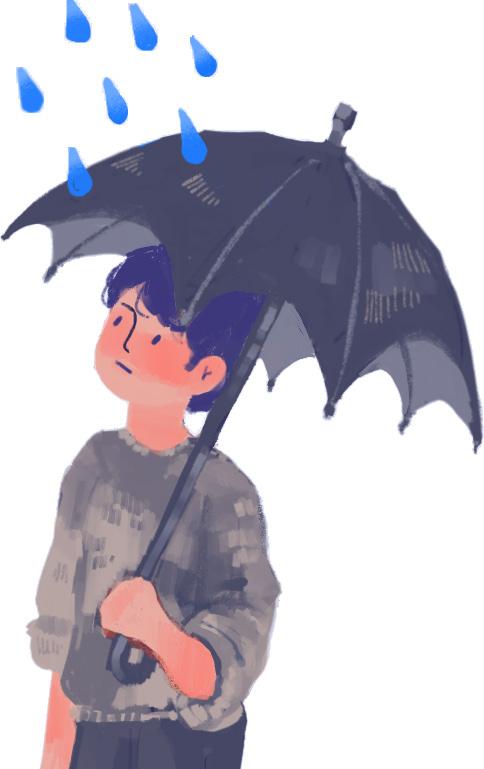
34 TH STREET MAGAZINE 6 WOTS
Hometown York, Pennsylvania
Major Communication and Gender, Sexuality, and Women’s Studies
Activities
Editor-in-Chief of 34th Street Magazine, Penn Association for Gender Equity (PAGE), Coalition Against Fraternity Sexual Assault (CAFSA), Penn Anti–Violence Educators (PAVE), The WALK Magazine.

In another universe, Emily White (C ’23) and I are mortal enemies. Once upon a time, we ran against each other to be editor–in–chief of the magazine you’re reading right now. Back then, they were put off by my skinny white twink demeanor, and I almost threw away any remaining goodwill over a petty grudge (I lost that first election, if you couldn’t tell). But we’ve both had our time at the helm of Street now, and somewhere along the way they became one of my best friends.
To be close with Emily is to always feel protected. Their Pine Street apartment has been my refuge many times over the past year and a half, whether riding out an extra late production night or nursing a broken heart over homemade Polish stew. The same care that Emily brings to their friendships—sometimes to the point of brutal honesty, when it’s needed—they extend to their sources, making them one of the most empathetic reporters I’ve had the pleasure of working with and learning from.
For this interview, Emily, myself, and their cats set up camp in their bedroom, which is cluttered with racks upon racks of thrifted clothes. After a whole year of building a magazine together, it was time for one more 34th Street team–up.
Meet
BY WALDEN GREEN
CAMPUS MAY 2023 7
Photo by Rachel Zhang
This interview has been edited and condensed for clarity.
Emily White
Street’s former editor–in–chief: fashionista, glossy mag crusader, and proud cat parent.
You’ve previously mentioned that interviewing other people is one of your favorite parts of being a journalist and reporter— what do you love the most about conducting interviews, and how does it feel to be on the other side of the microphone?
My favorite part is seeing the emotion on someone’s face when they’re telling a story about something that’s really meaningful to them. It’s so rare in the day–to–day, unless you’re really close with someone, that you get to ask them questions about their life that are actually meaningful. And when you’re interviewing someone—especially when you’re profiling someone—that’s kind of the whole point: You get this little peek into their inner world. It’s a different kind of understanding about the way that a person thinks and feels and acts than you would get, say, just getting coffee with someone. And how does it feel now to be on the other side? Weird, especially because I feel like this is the kind of interview where I’m supposed to be really reflective, and also being a second semester senior, I’m in a very reflective headspace generally.
There are two silent guests here with us: your cats Sailor and Luna. Who are these cats to you, and why should more people have animals in their house?
It makes it feel more like home and less like a place that you live. I also tend to overthink things and get really in my head, but when a cat is staring you in the face at 7 a.m. and they’re like “I want food. Feed me,” and they’re crying and running around in circles, you can’t overthink that. It’s just a cat that wants food. Being able to take a step back and look at the world through— to be kind of cheesy—the eyes of your pet is very grounding. And also I just love them.
If you could ask Sailor and Luna one question each, what would you want to know?
I want to ask Luna why she compulsively cleans herself. She’s one of the cleanest cats I’ve ever met. Sailor—I want to ask him why he befriended a possum, and a skunk. Sailor just befriends everything, and I want to understand how he does it.
When did you decide that you wanted 34th Street to become a part of your life?
In 2020 back home living with my mom, ev-
erything was virtual, and I just wanted something to do with my time. I was also taking a class on writing about the arts and pop culture, so I was writing three, maybe four articles a week that entire time, mostly because I just needed an outlet for my thoughts. Also, when you’re living your entire life online, you start thinking a lot about the culture of those online spaces, so writing about it in a non–academic way felt a lot more meaningful than “let me take this class and like understand how TikTok works.”
When did you decide Street was going to become your whole life, so to speak?
As I became a section editor, and began writing more about things that mattered and getting to do more of those reported stories, I started to see the value of a place like Street not as just a repository for my thoughts about digital culture, but as a way to uplift the stories of other people who don’t always get that spotlight put on their lives or their opinions. So some of the earlier stories that made me fall in love with writing were interviewing @fiercefatfemme, talking to the owner of Nonnormative Body Club, and even recently, talking to John Shahidi of Avril 50. All of those made me realize that this was bigger than myself, and that just because we’re student magazine doesn’t mean that we don’t make an impact on people’s lives.
Once you’ve got the bug, it just kind of grows and spreads, and before a long, I was asking Bea [Forman] “Hey, do you think I’d make a good editor-in-chief?” because I was deeply insecure, and convinced that I’d be bad at it. But because she’s Bea, she was super sweet and encouraging, and also made really clear that if it was something I wanted to do, and wanted to do well, I needed to decide that I was going to commit to it pretty fully. At that point, I knew if that was what it was going to take to be able to make the changes that I wanted to make at Street, and that I would do it. And so I did.
In the months leading up to you becoming editor-in-chief, there were two words that sort of became a a clarion call for your tenure. Want to say what they were together?
[In Unison] Glossy mag!!!
What was the genesis of that vision? And how about the process for bringing it to life?
In really broad strokes, it was an idea that had been presented before I was ever super involved with Street. Bea had also kind of broadly outlined a vision for Street that included it being a monthly magazine, and for a lot of reasons— many of them COVID related—that didn’t end up happening under her tenure. I saw the potential of that idea and wanted to take it a step further and say, “Yeah, we can change how we print, and that in and of itself is important. But I also think that Street as a magazine has so much room to grow in so many other ways and, for example, our digital presence deserves as much attention as like the print magazine does, or we can launch a podcast as like another way of engaging with the audience. Everything started swirling into more of a holistic rebrand, as opposed to just different paper and a different schedule.
Now that you’re living a post DP–life, what do you miss the most about 34th Street?
Being in an environment that takes pop culture seriously is so hard to find, especially one that takes it seriously in a specific way, where we all recognize that there are things more important than the latest blind item on a gossip blog, and also that those silly little things are important as escapes from the reality of the world in 2023, or a fun part of our lives or something we really love. Hearing a music writer get super excited about an album that they want to review, or an editor really going to bat for one of their writers, defending a pitch that they came up with or a particular choice they made—that’s just a really special feeling, especially at such a young age.
What’s a memory that sticks out to you from your time on board?
One of my favorites, which I think I’ve told you before, is the night that we were all elected, doing our fun little super–secret DP initiation things. You, me, Eva, Arielle, were just all walking down Locust. I think like our arms were linked or something—just a super cinematic sense of accomplishment and excitement. And we just started shouting “glossy mag” to random cars going by. I love that memory mostly for its symbolic value, I think. I hope that everybody gets to feel that excited about something that they’re doing at Street or in general.
Who are the people that made this experi-
34 TH STREET MAGAZINE 8 EGO
ence for you?
Tamsyn was editor–in–chief when I was recruited, and I didn’t really interact with her much, but the way that she shaped Street during her time was really important to the experience that I had. My first editor, Hannah Lonser, who kind of let me write, occasionally, some really stupid shit in hindsight, but let me fall in love with Street on my own terms. The board when I was a section editor: Chelsea, Mehek, Karin, and of course Bea, who taught me how to be an editor, how to write a good lede, but also how to really care about what a writer was trying to say and make sure that my writers felt like they also had a place at Street. Jonah Charlton, for being the best co–EIC I could ask for. My board, the 138, Walden, Arielle and Eva, who were all the most supportive and encouraging co–leaders of Street that I could have imagined—co–Strexec, I suppose I should say. I think the EIC lin holds an especially close place in my heart because Bea really shaped what I imagined this role to be and you were there as I was doing it, being the second–in–command, checking on my impulsive decisions sometimes…
…or enabling said impulsive decisions.
Sometimes enabler, but most importantly you were a really good friend throughout the whole thing. I think my time at Street would have been very different, had you not been there.
[Begins Crying]
It’s okay! I also started to cry during my interview with Bea. It happens. Do you want a hug?
No, it’s okay. I have to maintain journalistic objectivity.
Journalistic objectivity is fucking bullshit!
Can I quote you on that?
Yes, but you have to include the “fucking.”
What is one piece of advice that you think all of your successors can learn from?
My biggest piece of advice is to remember that, especially being editor–in–chief, you only have one year, which sounds like a long time, and in some ways it is. But if you have a really big vision, you’ve got one year to make it happen. That doesn’t mean that you should work yourself to the bone to accomplish something that
is Sisyphean–level impossible. But it does mean that you shouldn’t be scared of doing something just because it seems hard. Because this is your one chance to really, truly be at the helm of a magazine and have that level of creative freedom and, frankly, a lot of responsibility to your staff, to the Penn community, to the people that you interview, and that your staff interviews for stories. Taking a step back and putting all of that in perspective, and knowing what you want to do, what you can reasonably expect to do in a year, and then just go for it and make it happen, because it’s not a chance that you’re gonna get again for a very long time.
How has Street changed you?
Street has forced me to be a lot more patient; it’s also forced me to be a lot more thoughtful. I’m naturally a pretty reflective person, but usually that comes after the fact and less thinking about things as they’re happening. I think that’s a skill that you get from being in the middle of a lot of really big decisions when you’re 21 and, realistically, your concern should be managing your savings account or registering for classes, and not being in charge of a of a media company. It’s hard to put in words, but Street made me feel a little bit less afraid to take so–called frivolous things more seriously. Obviously, it gave me the
practice that I needed to become a better writer and editor, but in a lot of ways, it’s a big part of where I grew up, not in the childhood sense but in the figuring out how to make decisions on your own sense. Because when you have that much responsibility, you have people around you who give you advice or who try to help you make those decisions, but you’re responsible for what comes out of your time in charge, and you don’t really have anyone else to fall back on.
How are you spending your time now?
I’m taking a CIS class which was a decision. In more fun news, I’m spending a lot more time going to art exhibits and just impulsively deciding to go to a restaurant in Center City, because I actually have three consecutive hours of my life to decide to do something like that. I’m writing a lot that isn’t journalistic, which is a fun experience. I’ve been watercoloring, spending more time with friends that I kind of lost touch with while my schedule was overtaken by The Daily Pennsylvanian Inc., giving my cats lots of treats. I’m just living a little bit more—I don’t want to say serendipitously, but so much of my life used to be planned. On a day–to–day basis, I would have a list of meetings that I’d have to go to, and now I just get to wake up and say “What do I want to do today?” And it’s different every day. ❋
Favorite outdated online social platform: Serious answer: MySpace. Silly answer: Wizard101 chatrooms.
Who is your male hall pass, and why is it Dylan O’Brien: I mean, have you seen Season 3 of Teen Wolf? That’s all.
Easiest “amateur mixologist” drink: A butterfly pea blossom gin anything, with a squeeze of lemon.
Last song you listened to: “Say It Right” by Nelly Furtado
There are two types of people at Penn … Besties (superlative) and besties (derogatory)
And you are? Depends on the day.
CAMPUS MAY 2023 9
Amelia Stoesser Ignites her Inner Spark
As president of Sparks, Penn’s student–run dance company, this pre–med sophomore dances through her busy schedule.
 SOPHIE BARKAN
SOPHIE BARKAN
10 34 TH STREET MAGAZINE EGO
Throughout each stage of Amelia Stoesser’s (C ‘25) life, one hobby has remained consistent: dancing. “It was the only thing that I didn’t quit growing up, so I stuck with it,” she laughs. From performing in her living room at the age of two to joining studio dance companies and later taking on the role of captain of her high school’s competitive dance team, Amelia has always made time to dance. When she arrived at Penn her first year, Amelia began dancing right away and eagerly joined Sparks Dance Company.
Sparks Dance Company, founded in 1989, is Penn’s student–run dance company specializing in a variety of styles including jazz, contemporary, ballet, tap, and hip–hop. Each year, Sparks performs two shows entirely choreographed and produced by the members. As president of Sparks, Amelia handles all of the communication with the Dance Arts Council (DAC) and makes the schedule for “Spark Sunday,” their weekly Sunday rehearsals.
As a pre–med student juggling a busy, class–filled schedule, dancing for Sparks allows Amelia to separate herself from academic stress. “Throughout high school, and especially now, when I go to rehearsals for Sparks, I can put everything off to the side and not feel guilty because I’m still doing something that I enjoy. I also just love all of the people and spending all Sunday with them,” she says.
Reflecting on preparing for Sparks’ spring show in April, Amelia provides a glimpse into her presidential duties. “My G–Cal is super scary. It’s filled with many hours of tech rehearsals.” The group meticulously planned each detail of the per-
formance, even coding the lighting for each dance down to the millisecond.
Through choreographing her own dances, Amelia taps into her creativity. She explains that what makes Sparks unique is that anyone in the group who wants to choreograph their own dance has the opportunity to do so. “We do a ‘show your dance’ at the beginning of each semester where everyone brings their song and dance ideas. We all get to have our own creative freedom,” Amelia shares. The Sparks performance showcases a variety of dance types as members from all different backgrounds and levels of experience bring their individual styles. “I’m performing in five dances this semester, and they all have super different vibes,” she says.
In addition to performing for the Penn community, Sparks is also highly dedicated to community service, performing for senior citizens and teaching dance warm–ups for kids in the Philadelphia area. Amelia takes pride in Sparks’ commitment to service, saying, “When something has a larger meaning, besides just putting on a show every semester, it makes everything feel a bit more purposeful.” She especially loved their recent visit to a senior living center where they performed a dance from a musical. “All of the people in the home were so excited. It’s nice to make other people smile,” she says.
In addition to her time spent with Sparks, Amelia prioritizes giving back to the community in other ways. She’s a counselor over the summer for Camp Kesem—an organization that provides a free week of summer camp for chil-
dren whose parents have been affected by cancer—and spends time during the year fundraising and creating programming. Amelia also volunteers for Be Body Positive Philly, a non–profit organization and after–school program for students in Philadelphia that empowers youth by encouraging body positivity, runs self–care workshops, and aims to reduce healthcare disparities.
Balancing her role as Sparks president and packed schedule as a pre–med student, along with her other involvements and responsibilities, Amelia strives to take it one day at a time. She says, “Don’t look back. I think it’s really easy to dwell on things, like an exam that didn’t go well or a conversation you had that was awkward. I’m involved in so many things that I find that if I take time to rethink things, I just end up really exhausted.” With reference to her love for dance, Amelia continues, “Just keep moving. There’s always tomorrow.”
Feeling that many people forget that they’re allowed to take breaks, Amelia advises other busy college students to follow through with their passions. “If you don’t take time for yourself to do something that you really love amidst all of the academics, life isn’t going to feel as good.”
So for anyone hesitating to continue that hobby or recreational activity from childhood, Amelia says, “Just because it’s sometimes more overwhelming to get involved in college doesn’t mean that your involvement with fun extracurriculars has to stop after high school. Finding a way to keep you moving and a way to give you purpose and socialization outside of academics is just so important!” ❋
11 MA Y 2 0 2 3 CAMPUS
Frackets and Beaters and Bears, Oh My!
How Penn’s frat fashions mean more than just the shoes you wear on a Thursday night
BY EMMA HALPER
For a night out at Penn, an average student’s going out routine is usually something of the following: hair, makeup, outfit, perfume, gum, and the finishing touches—their fracket and their beaters.

Frackets, or “frat jackets,” are ideally cheap, durable jackets to wear to a frat party, and frat shoes, sometimes known as beaters, are sneakers that are designated to be “beaten” at frats. These two clothing items are Penn party essentials and are
larger symbols of Penn’s student culture. While beaters are seen year round at Penn, frackets arrive as the temperature drops. The goal is for the fracket to keep you warm enough on your walk to and from the frat houses, while also being inexpensive enough that if you lose it, or it’s stolen, you won’t be losing a valuable coat. In the winter months at Penn, frackets are always on display on Thursday, Friday, and Saturday nights, shaping a large portion of the school year’s social dynamics.
Frackets are an essential part of the almost ritualistic nature of going out to frats. When a friend group enters a frat party together, they all go to a corner and find a place to leave their frackets, signifying that, as a unified group, they are entering this party together—and will likely leave it together, too. If someone can’t find their fracket, all of the others in the group will rally around that person and try to help them find it. If someone tries to steal a person’s fracket, their friends will intervene.
34 TH STREET MAGAZINE 12 STYLE
Illustration: Ani Nguyen Le
It may sound trivial, but frackets do create a bond between Penn partygoers; if you tie your fracket to someone else’s, you have an established connection to them.

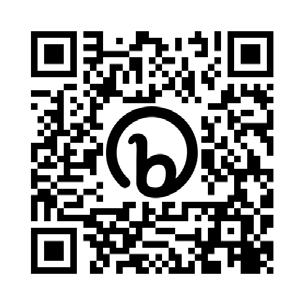
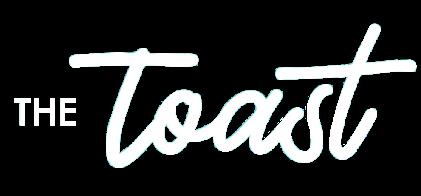























There is also a form of a social hierarchy when it comes to protecting frackets at a frat. Anyone with connections to a member of said house will likely ask someone to put their fracket in a safe spot to avoid it being stolen. For those with connections, their fracket can be found quickly, but for those who don’t know someone in the frat, it’s every fracket–owner for themselves in terms of making it out of the frat wearing the same coat you walked in with.

As for beaters, their role is reserved for practicality—at a party, whatever shoes you go in wearing will come out looking significantly worse. Because of this, students will wear either an old pair of shoes or a pair they’ve bought especially for frats. The beater of choice is almost always a pair of Air Forces or Converse high tops (some people have both), or any shoe that can withstand the filth of frat floors.
There is something to be said about the classism that exists with beater culture. People buy new Converse or Nike sneakers with the sole intent of using them as “beaters” for frat parties, and they won’t wear these $100 sneakers anywhere but to places where they will be destroyed. Many students can’t afford to throw away money for sneakers that are designed to soak up spilled beer and frat floor dirt. The “beater” culture plays into the omnipresent wealth gap at Penn, and the separation between the “haves” and the “have nots” can be seen clearly with footwear present at a party— and the footwear present nowhere else.
When students casually throw on their frackets and their beaters, they’re likely not thinking about what these items represent in the grand scheme of Penn’s culture. But while they are (on paper) clothing items that serve practical functions, they embody the Penn students’ philosophies, along with its social scene. People who go to Penn know what a fracket is, know what frat shoes are, and understand that if they want to go out, they’ll need to find both—and, if they can, find a frat member who will stow their things safely upstairs. k
All You Can Eat Buffet order online @ TAKE 10% OFF with your PennCard All You Can Eat Buffet order online @ TAKE 10% OFF with your PennCard All You Can Eat Buffet Exp. 4/11/12 Welcome CLASS OF 2016 4004 chestnut street | (215) 386-1941 order online @ newdehliweb.com | closed mondays $4 beer! shots! wine! We Deliver! TAKE 10% OFF with your PennCard 4004 chestnut street | (215) 386-1941 a newsletter by Subscribe today!
STI Testing at Penn Is Easier (and Harder) Than You Think

No one likes thinking about STIs. They have spelling–bee winning names (see: gonorrhea), result in unnecessarily terrifying WebMD searches, and may prompt flashbacks to your 10th grade sex ed teacher’s fanatical sermons on the virtues of abstinence.
But sexually transmitted infection (STI) testing remains one of the most important issues on college campuses. Studies indicate that around one in four college students have an STI, and many may not
even be aware of their status. One study found that fewer than 7% of male college students and approximately 17% of female students reported getting an STI test over a 12–month period. These low numbers may result from various factors, including a lack of effective sexual health education, cost barriers, and the stigma surrounding STIs. As a result, many feel it is critical to have accessible, affordable, and anonymous STI services on campus.
Penn has made strides in improving ac-
Illustration: Callia Thornton
cess to sexual health services on campus. Students can make an appointment with Wellness at Penn anytime, either online through its wellness portal or by calling a provider at (215) 746–3535. The cost of testing is entirely covered for any student on the Penn Student Insurance Plan. Wellness at Penn will also waive any fees for lab charges related to sexual assaults.
But for students on private insurance, which represents the majority of students at Penn, there are still costs asso-
14 34 TH STREET MAGAZINE
The process of getting tested at Penn isn’t always as fun—or easy—as hooking up.
LEO BIEHL
ciated with STI testing. Tests can range from between $10–$30, with an HIV test costing $22 and single–site tests for gonorrhea and chlamydia costing $10 each. Wellness at Penn prioritizes making costs for STI tests clear before providing them.
“One of the things we hear a lot from students is that they never know what the cost is going to be until they get a bill,” says Erika Gross, Chief Operating Officer for Wellness at Penn. “What students really want is to know what the costs are going to be for the care that they do receive.”
Some students say the cost of testing might pose a barrier to getting tested. “I know that $10–$30 might not be that bad for some, but I do know that when you’re thinking about individual tests—depending on how much you’re exploring and how much you feel comfortable getting testing—that can add up,” says Mari Andrzejewski (N ‘24), who also works with Penn Violence Prevention.
The Centers for Disease Control and Prevention recommends that people with more than one sexual partner get tested for HIV at least once a year. Wellness at Penn follows this guidance, advising that students get tested for STIs annually—or even more frequently depending on a doctor’s recommendation.
As a result, the cost of STI testing could accumulate if students are getting tested regularly, such as each time after changing sexual partners. A full panel STI test through Wellness at Penn—which includes HIV, gonorrhea (urogenital, throat, and rectal), chlamydia (urogenital, throat, and rectal), syphilis, and hepatitis C—would cost $99. Most students might not require all of these tests, but especially at Penn—where hookup culture is prevalent—the cost of frequent testing might discourage students from getting tested.
“I’ve generally heard through the anti–violence community and through other students who partake in hookup culture at Penn that they’re not particularly enthused about going to get tested just be-
cause of the cost,” Mari says.
Layla Murphy (C ‘23), co–founder of Quake Magazine, which focuses on appreciating bodies, relationships, sex, and love, agrees with Mari’s concerns about the cost of testing. Layla believes that Wellness at Penn should eliminate the cost of testing entirely, along with placing a greater emphasis on publicizing STI testing services on campus. “At minimum, people are paying too much money to get STI tested. But at worst, they’re not getting STI tested at all,” Layla says.
Some universities have instituted free testing to alleviate costs and encourage students to get tested. Cornell University has made preventative STI screenings free for all students, regardless of their insurance plan. At Harvard, all students who have paid the Student Health Fee are eligible for testing without out–of–pocket charges. Closer to campus, Temple University offers testing “at low cost based on your ability to pay.”
According to Gross, discussions about implementing free STI screenings at Penn are ongoing. “We always look at ways to reduce the cost to students, so we continue to evaluate options to eliminate the cost for asymptomatic STI testing that would meet the general recommendations,” she says.
If students are unable to pay the costs associated with STI testing, there may still be ways to access testing through Penn. According to Gross, Wellness at Penn handles any requests for fee waivers on a case–by–case basis. But as of now, Penn has no concrete plans to establish a universal free testing policy. “We haven’t been able to accomplish that yet,” Gross says.
According to Mary Kate Coghlan, Director of Communications for Wellness at Penn, the University assessed the cost of implementing free testing prior to the COVID–19 pandemic, but has not done so since. Gross notes that establishing free testing would likely lead to an increase in the Penn Clinical Fee, which was $332 per semester in the 2022–2023 academic
year.
Some students have also raised concerns about the privacy of STI testing at Penn. Previously, STI testing charges would show up on a policyholder’s insurance plan, potentially allowing parents to discover a student’s testing habits, which is uncomfortable for some students. Now, the charges show up as a “healthcare assessment” on a student’s financial account, without any identifying information about the test.
There is not currently an option for students to take the charge off their account altogether. Gross says that the University phased out a cash–payment option for appointments, as most students don’t carry cash. At this time, she says, there is no option for students to pay directly by credit card to prevent any charge from appearing.
Students are able to get tested for STIs outside of Penn. Some students may be able to access cheaper STI testing through their primary care physicians. There are also many free STI testing services throughout Philadelphia that are available to students. These include rapid HIV testing at the Mazzoni Center in Center City and walk–in STI testing at Philadelphia Health Center 1 in South Philadelphia.
For students who don’t want to commute to an appointment, the Philadelphia Department of Health offers a convenient alternative. By filling out a short online request form, students can request free at–home tests for HIV, chlamydia, gonorrhea to be mailed to their address. Students can also request free condoms and other sexual health resources.
Not every student is aware of these off–campus testing options, though. Layla notes that these resources may pose other challenges to Penn students, including being far from campus and underpublicized. “There are a lot of places that you can get free STI testing in Philly. I just think it’s not front of mind for people,” she says. ❋
15 CAMPUS MA Y 2 0 2 3
Snatching Wigs and Booking Gigs
BY AVALON HINCHMAN
Towering high–heels, flashy dresses, and colorful wigs: the iconic symbols of drag performance, a powerful form of art. What was once a countercultural rebellion, drag has since become a well–known phenomenon, generating both fanaticism and contention.
A lot of the credit goes to RuPaul’s Drag Race, which since its initial premiere in 2009, has become nothing short of a cultural phenomenon, catapulting drag into the mainstream. But drag has been around for much longer. During the gay rights movement of the 1960s through ‘80s, gay and transgender people of color fought for equality, acceptance, and freedom of expression. They were the original queens, truly the blueprint for drag culture today, and its current popularity is a product of decades of LGBTQ activism.
And still, legislation like the drag bans recently passed in Tennessee and several other states threatens this performance art. Far right–wingers perpetuate harmful narratives portraying drag as deviant and capable of corrupting young children, aiming to extinguish forms of gender expression that break the binary.
Changing social and political climates have transformed the drag scene over space and time, now ushering in a new crowd of Gen Z performers working alongside long–time professionals. Recent turning points like the COVID–19 pandemic and the Black Lives Matter protests are implicated in these many
manifestations of drag and collective efforts to make it an inclusive space. There’s more to drag than meets the eye, and our city’s unique environment has produced a complex network of performers and community members that transcends the sum of its parts.
Philly has maintained a flourishing drag scene that exemplifies the character of its inhabitants: a conglomeration of lip syncing, live singing, burlesque, competitions, and comedy, to name only a fraction of what’s offered. It gestated in the Gayborhood, located near Washington Square, among other hubs of LGBTQ culture. “We are a very eclectic city. When you come to Philly, you will find a show every single day, and it's always going to be something different,” says Icon Ebony–Fierce, a drag artist with almost 13 years under their belt.
Before their drag career began, they were an emcee at underground shows, responsible for hyping up the crowd. Since their early twenties, Icon Ebony–Fierce liked to experiment with gender expression through clothes and makeup, so the transition to drag happened pretty naturally.
Some performers have been in the business even longer than Icon Ebony–Fierce. Ian Morrison, better known by his stage name Brittany Lynn, started his drag career in the 1990s. After playing Frank N. Furter in a Philly production of the Rocky Horror Picture Show—which he calls “bootcamp for drag”—and a stint as Alice the housekeeper in a live version of The Brady
Bunch, Morrison was invited to participate in a Thursday night drag competition. Against all odds, as a 22–year–old struggling college student going up against drag legends, he won and Brittany was born.
Back then, the Philly drag scene was almost exclusively competitions with very few regular performances, so Brittany made friends with the drag queens who worked at Bob and Barbara’s, a lounge at 15th and South. She got a job working alongside Miss Lisa Lisa, who has hosted shows there for over two decades.
Brittany continued to gain fame and is now one of the biggest names in Philly drag. She successfully marketed her drag persona at a time when the internet and social media didn’t exist by handing out flyers in front of clubs. A degree in journalism, PR, and advertising from Temple University prepared Brittany well for the difficult task of securing a foothold in the competitive drag scene.
Even when she worked in advertising, Brittany was deeply invested in the LGBTQ community. She was the editorial assistant for the Philadelphia Gay News, the head of marketing and advertising for the 1–800–Gay–Live chat line—a way for gay people to meet before the invention of the internet—and was a PR and Ad Rep at Grindr and Manhunt. “I've made every dollar ever from the gay community, so that's why I try to bring gayness to these areas,” says Brittany.
It’s not uncommon for drag artists to have a day job on top of their performance schedule. For some, like Drew Gaver a.k.a. Bev, it’s just
34 TH STREET MAGAZINE 16 ARTS
In the City of Brotherly Love, drag sisters, misters, and everyone in between are out here doing it for themselves— and their communities.
not feasible to live off their drag income. On stage, Bev is a comedic drag queen making use of her background in improv theater, but from Monday to Thursday, Gaver is the office manager of a dental practice. Bev performs almost every weekend, usually two to three shows on Saturdays, adding up to an exhausting work week.
Others are seeking to create a meaningful connection between drag artistry and their more traditional means of employment. Icon
Ebony–Fierce is the Student Power Leadership And Activism Together program manager at GALAEI, a QTBIPOC radical social justice organization located in West Kensington. “My mission as not only a performer but also a curator was to provide safe spaces for marginalized communities that were ostracized from the Gayborhood,” they say.
Many drag performers in Philly use their platform to engage in various forms of activism. Brittany used to work for The Philadel-
phia AIDS Consortium as a representative who toured the city teaching about gender identity. She also runs a local chapter of Drag Queen Story Time in coordination with the public library system, deconstructing gender norms while entertaining people of all ages with a good book. Similar programs that exist across the country have come under attack in the recent wave of anti–drag sentiment. Brittany has won several awards for her community service, and city council even declared March 15 Brittany Lynn Day to celebrate her accomplishments.
Unfortunately, the COVID–19 pandemic threw a wrench in the Philly drag scene and related social justice efforts. Without the ability to hold in–person drag shows under quarantine restrictions, performers lost a primary source of income.
Gaver had just reached his savings goal that would allow him to quit his day job and pursue drag full–time when the city shut down. Fortunately, working in the healthcare sector provided some security, and he chose to step back from drag for a time. He says that some full–time drag artists turned to OnlyFans as an alternative “because it was the only way that these performers who had been relying on that income could do it.”
Like a lot of industries, drag transitioned to the online space to survive and performers had to get creative. With the help of a tech–savvy roommate, drag queen VinChelle, who made a name for herself when she won Philadelphia Drag Wars back in 2015, “did not take COVID lying down” and was able to stay busy doing digital shows. Zoom bingo and trivia hosted by drag queens proliferated during the pandemic.

Icon Ebony–Fierce started a donation–based web series called Ebony’s Confessions where they reacted to wild stories submitted anonymously and gave advice. They also did a number of drag shows that were pre–recorded music video style.
But COVID–19 didn’t just push people’s lives online—it was a major social reckoning that exposed real–world injustices previously silenced by the day–to–day. In the wake of the murder of George Floyd and the ensuing Black Lives Matter protests, community members began to call out inequity and mistreatment in Philly drag. “When I entered the drag scene, it was a little bit of a culture shock. I've met some amazing-
MAY 2023 17 CITY
VinChelle | Photo courtesy of Brittany Lynn
ingly racist and transphobic. My impression was that everybody would have a rainbow flag waving, but I guess I was pretty naive,” says Icon Ebony–Fierce.
In response, a group of performers of color, led by VinChelle and another queen, held a town hall. They called out other drag artists, bar owners and managers, and producers for racism, a lack of diversity in casting, and sexual harassment, forcing people to apologize or step down. VinChelle says the initiative put a huge target on her back, because a lot of white producers didn’t follow through with the promises they made.
According to Icon Ebony–Fierce, “There's still a lot of people ignoring our demands, but I would say that the scene is completely different now. People are standing up against injustice in the community. People are not afraid to speak out. The casts are more diverse.”
VinChelle developed several projects with the goal of uplifting historically marginalized communities in the Philly drag scene. During the same period of social unrest, she started a talk show called The Black Diaries which gave Black entertainers a platform to discuss their experiences.
Inspired by The Vixen, a Drag Race alum, VinChelle hosted a Black Girl Magic Philly special in February of 2019 featuring 18 local Black performers. The show was only supposed to last one night, but it was so successful that she kept it going, and now she hosts this celebration of Black talent on a bimonthly basis. “I love that Black people that want to start drag can look at that show and think ‘look at all these people that look like me’ or ‘I feel comfortable here,’” she says.
Non–binary and gender–fluid burlesque and drag artist—they like the inclusive term “drag royal”—Deej Nutz is also working to promote diversity in the industry. They grew up in Philly, went to college here, and are still living and working in the city. A few years ago at the beginning of their performance journey, they joined a burlesque troupe of mostly plus–sized performers. It was before the era of Lizzo, so Deej Nutz didn’t know this type of movement was even a possibility for plus sized people until they met the troupe. The typical seductive striptease performed by a fit, AFAB body associated with burlesque is certainly beautiful, but “Where’s everyone else?” they ask.
As someone with both stereotypically masculine and feminine traits, Deej Nutz “want[s] to confuse people when it comes to gender.” They hope to inspire others to express their gender and sexuality on their own terms because it isn’t anyone else’s business, especially not politicians. Some advice from this drag royal: Be louder.
Deej Nutz, who has multiple sclerosis, performs with a cane. Before their official entrée into the world of Philly drag in February of 2019, they’d never seen another drag performer use one out of necessity. Due to their disability, Deej Nutz was forced to quit their job the previous month and a little over a year later the country went into lockdown. But spending time at home and online ended up immensely benefiting their performance career.

In the comfort of their own space and with the ability to take breaks when necessary, Deej Nutz could create without sacrificing their physical well–being. They had plenty of time to hone their filming and editing skills, developing content for digital drag shows around their house. The fast–paced scene can be exhausting to navigate for someone with a chronic disability, so the introduction of an alternative performance platform during the pandemic was an opportunity to craft the Deej Nutz fantasy in all of its burly glory.
Insufficient accessibility in drag venues limits both who can perform in and who can attend shows. Deej Nutz believes that proactively addressing the problem—adding wheelchair ramps, elevators, ASL interpreters, and livestream capabilities—rather than waiting to be called out would demonstrate a genuine commitment to promoting diversity. “It's like, ‘Well,
34 TH STREET MAGAZINE 18 ARTS
Photo courtesy of Deej Nutz
we've got enough people giving us money, so why do we care about the people who can't make it into the space?’ Why don't you care?” they demand.
Things are changing for the better. Deej Nutz praises Philly for exhibiting an intentionality in featuring Black performers in drag shows and hiring Black producers, and VinChelle finds the Philly drag scene unique in that it “is very inclusive. We accept all types of drag and all types of performance styles.” Icon Ebony–Fierce cites “a big shift in the community with a lot of new amazing Gen Z performers who are not afraid to express themselves.”

Still, tension remains in the Philly drag scene between the old and new generations of performers. “These kids that put a Party City wig on their first day of doing drag got something to say,” proclaims Brittany. But that doesn’t mean there isn’t bad blood among the seasoned professionals too. While the Gayborhood is a safe haven for some, the deeply entrenched exclusivity along lines of race and gender identity cannot be so easily overturned. “I personally enjoy going out in the Gayborhood, but I also realize that I'm a cis, white, gay guy, and there are other communities that may not feel as welcome,” says Gaver.
Like most industries, the drag scene in Philly is imperfect. Performers bicker and not everyone gets along, but that’s to be expected when so many big personalities are brought together. With the increasing popularity of drag, even in the last five years, more people are vying for a limited number of positions.
Bev’s impression of the Philly drag scene is “We’re just outspoken here and we're all fighting for the same attention,” which may be part of the reason the city boasts such diverse talent. As Brittany puts it: “Honey, I'm gonna go out and make these coins. I'm on my way to the bank right now. Sit at home and be mad.” She’s truly snatching wigs and booking gigs.
Shared ideals ultimately bring the drag performers of Philly together, whether it’s addressing injustice and ensuring diverse representation in the community or raising money for the AIDS charity event, Code Red.
Brittany Lynn founded her organization Philly Drag Mafia to support fellow drag queens be-
fore the Philly scene expanded beyond competitions. At the time, performers only made money if they won the competition and weren’t permitted to collect tips, so there was almost no way to transition to doing drag full time. Even those who were hired to host an event were usually paid in drink tickets. Philly Drag Mafia became a sort of drag union, with Brittany demanding the venue provide a dressing room, security guard, and a certain amount of pay in addition to drink tickets to all the queens who worked for her.
Initiatives like the competition show Snatcherella 3000, co–produced with four others by VinChelle and Icon Ebony–Fierce, build connections between drag performers just starting out and artists who have already created a name for themselves. “These new queens are amazing. They're hungry for it,” says VinChelle. Not only is Snatcherella addressing a lack of visibility for minority drag performers and subverting unfair judging practices—all the competitors receive a salary.
Thepassion for drag and the social change that can be achieved through this form of artistry expressed by Philly performers is explanation enough for why they push through the periodic negativity. Brittany, who has committed the better part of her adult life to drag, and Bev, who dons heels and a hot costume after a full work–week to get a laugh out of the crowd, are proof.
“My favorite part about performing is truly connecting with the audience … I get tired, but the excitement from the crowd and connecting with someone and changing someone's day around … sometimes we take that for granted,” says VinChelle.
In today’s world, drag is becoming more important than ever. An art and a form of expression, drag creates a community of people who are unafraid to show the world the most authentic version of themselves. “I would have never been exposed to anything remotely like this growing up, so I'm glad that I'm able to see these things now,” says Deej Nutz.
Maybe a drag performance just makes you laugh, gets you bobbing along to the music, or inspires your next experimental 2 a.m. makeup look. That’s okay too, because at the end of the day the artists on stage have come to entertain. So go to a show, tip a drag royal, and get ready to get your life. k
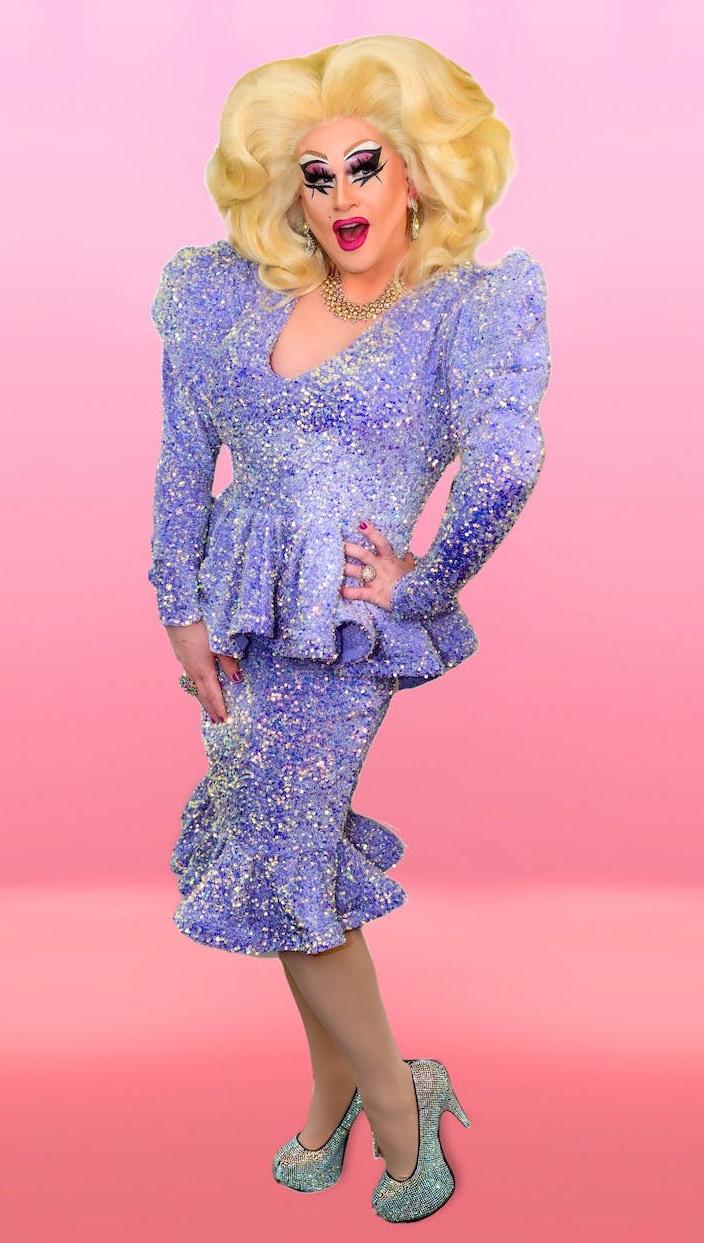
MAY 2023 19 CITY
Photo courtesy of Bev
Photo courtesy of Icon Ebony–Fierce
Take It to the Streets What to Do in Philly This Month
This month: Festivals, markets, art crawls, and lots more to do outdoors this spring.
Going to college in Philly, we’re so often bombarded—on social media and IRL—with seemingly endless options for how to spend our free time. So I’m delighted to announce that Street has done the hard part for you: We’ve rounded up what we think are the can’t–miss events for the month (and you can expect more of these in the months to come) in one convenient place. If I’ve done my job right, there’ll be something in here for every one of our readers, no matter what you like to do with your weekends.
—Arielle Stanger, Print Editor
May 2: Peter Cat Recording Co. @ The Fillmore Philly
Delhi–based Peter Cat Recording Co. is the summer soundtrack you didn’t know you needed. Their damn—near—perfect 2019 album Bismillah is the epitome of easy listening, ideal for every setting from the library to the beach.
Tickets starting at $18, Doors at 7 p.m., show at 8 p.m., 29 E. Allen St.
May 4: Sarah Silverman @ The Met Philly
Known for her deadpan humor and social criticism, Sarah Silverman will definitely put on a hilarious show at the Philadelphia stop of her “Grow Some Lips” tour.
Tickets starting at $39.50, Doors at 6:30 p.m., show at 7:30 p.m., 858 N. Broad St.
May 5: MUNA @ The Met Philly
MUNA, the indie pop trio best known for their viral song “Silk Chiffon” with Phoebe Bridgers, will be hosted by WXPN at the Met Philly this month. After releasing their 2022 album, MUNA was praised by publication Pitchfork for their “celebratory, affirming” sound with unabashedly queer
themes.
Tickets starting at $35, Doors at 7 p.m., show at 8 p.m., 858 N. Broad St.
May 6: South Street Fest @ South Street
Philadelphia’s favorite block party festival is back this may with much more to offer! Come hungry to enjoy international cuisines and classical restaurants, and after the feast don’t forget to shop from the eclectic selection of iconic South Street businesses. This year’s festivity also includes the launch of the Artist Row project!
11 a.m. to 7 p.m., South Street spanning 2nd to 8th streets
May 6: Rittenhouse Row Spring Festival @ Walnut Street
Rittenhouse Row Spring Festival returns for the first time since 2019. Featuring street cafes, local artist showcases, fashion shows, and live music, Philadelphia’s most upscale street festival is a springtime must–have for you to soak up much–needed sun while enjoying music and art!
12 p.m. to 5 p.m., Rittenhouse Square
May 6: Makers Market @ Elfreth’s Alley
Step into Elfreth’s Alley and take a step back in time. This biannual event takes place on this historical site of craftsmanship and creativity where you can shop for treasures while exploring one of Philly’s historical treasures. The Spring Makers Market is the place to live out your cottagecore dreams while supporting local makers and small businesses.
11 a.m. to 4 p.m., Elfreth’s Alley
May 6 – 7: Strawberry Month Kickoff Weekend @ Peddler’s Village
Summer is around the corner and we’re salivating at the thought of fresh picked fruit— strawberries to be exact. At the Strawberry Festival, all of your berry wild dreams will come true. From strawberry-themed treats and drinks to live music there is something for everyone and there’s no better way to ring in the summer season.
May 6 11 a.m. to May 7 5 p.m., Peddler’s Village, 2400 Street Road, New Hope, PA
May 10: Walk Up @ Lightbox Film Center
One of the most prolific contemporary auteurs, Hong Sangsoo returns to his special interest in form and structure that defines his filmography from the very beginning. Described by critics as “Eric Rohmer but with a lot more Soju,” Walk Up is both reflexive and provocative, deep yet playful, and it will be screened in center city for an one–night–only special limited engagement.
$8 with student ID, 7 p.m., 401 S. Broad St.
May 13: Kensington Derby and Arts Festival @ Trenton Avenue
Come to the wide cobblestone streets of Trenton Avenue and celebrate human–powered transits, neighborhood artists, and local businesses in Fishtown! Funds raised from the festival will be used to support neighborhood projects and community revitalization.
12 p.m. to 6 p.m., Trenton Avenue, Frankford Ave. to Norris St.
May 13: Met Gala GayBINGO! @ Congregation Rodeph Shalom
34 TH STREET MAGAZINE 20 EGO EVENT CALENDAR
It’s that time of the year when we watch celebrities parade up the steps of the Met, realizing that once again, they’ve missed the mark on the theme. Ever spend late nights fantasizing about what your Met look would be? Well dream no longer, Philly Aids Fund’s May GayBINGO night is Met Gala themed! Here’s your chance to support a worthy cause while finally upstaging all those B-list celebs who showed up to the Met in, you guessed it, a black tux. Tickets starting at $38, Doors open at 6 p.m., GayBINGO begins at 7 p.m., Congregation Rodeph Shalom, 615 N. Broad St.
May 20 – 21: South 9th Street Italian Market Festival @ Italian Market
Grease pole, halfball tournament, and Italian eateries—the annual Italian Market Festival is full of gelatos, participatory entertainments, and loads of fun! Come down for a day of family–friendly fun and celebration in the nation’s oldest outdoor market.
11 a.m. to 6 p.m., Wharton to Fitzwater streets
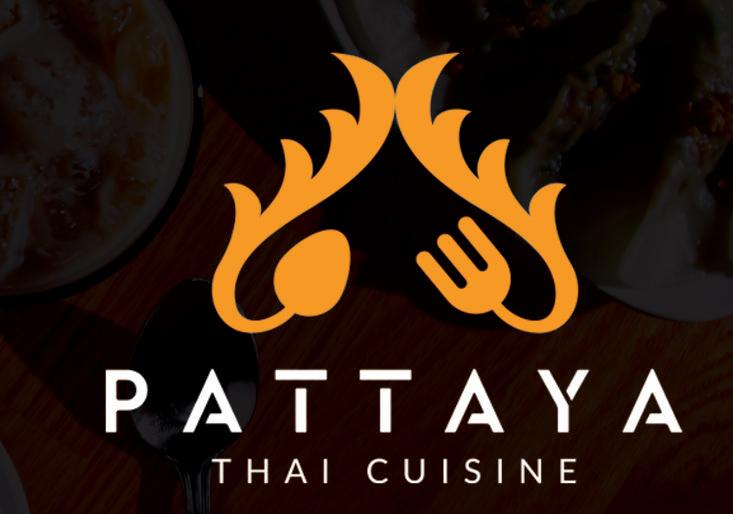


May 21: Fairmont Avenue Arts





Crawl @ Fairmont Avenue
Including more than 40 exhibitions overall, Fairmont Avenue Arts Crawl will showcase a diverse range of local artists and performers with an array of media including painting, printmaking, photography, and sculpture. You can also come and join participatory events like craft–making, face painting, and sidewalk chalk art—all for free!
12 p.m. to 4 p.m., Fairmount Avenue & Surrounding Blocks


May 25 – Sept. 4: Night Tours: Summer Twilight @ Eastern State Penitentiary
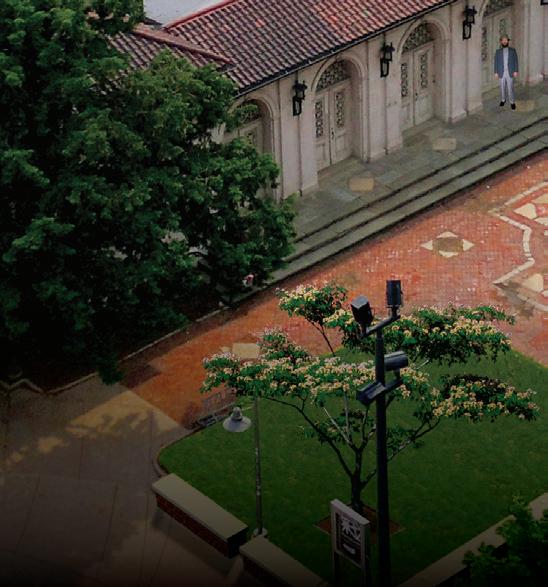


Eastern State Penitentiary is available for special evening access starting from May! As the sun sets in the west, explore the historic cellblock and reflect on its history and legacy through hands–on activities, or just grab a beer or soft drinks and enjoy the golden glow in The Fair Chance Beer Garden. New themes and events are added every month!
$21 for online purchase, Thursday through Sunday evenings, 2027 Fairmount Ave.


CAMPUS MAY 2023 21
4014 Walnut St. | TheRotunda.org The_Rotunda_Philly TheRotundaPhilly Check out The Rotunda’s website for May 2023 events! Catering 0 Delivery 0 Takeout 4040 Locust St. pattayarestaurant.com
When I Grow Up
Always in a rush to grow up, we never ask what we’re running towards.
By NOAH GOLDFISCHER

“What do you want to be when you grow up?”
Every single adult that happens to make small talk with a child between the ages of three and 18 seems incapable of coming up with any other question to ask.
When I was five years old, my go–to reply was that I wanted to grow up and become a monkey. I couldn’t think of a better nine–to–five than swinging through the tree line hunting for fruit and other snacks. Not only did the day–to–day of the monkey seem incredible, I was certain at the time that monkeys also got to choose their own
34 TH STREET MAGAZINE 22 WORD ON THE STREET
Illustration: Lilian Liu
naptime. Sadly, this simian pipedream was short–lived. Once I learned that you can’t simply change species when you grow up, I was forced to settle for a new dream job: growing up to be just like Mom and Dad.
As a child, my parents really were my superheroes. They were capable of everything and anything. Together they seemed to possess an encyclopedia’s worth of knowledge. No matter how unsolvable my youthful dilemmas appeared, they were always quick to offer a clear solution and provide a convenient answer to almost all of my questions. Although they didn’t seem to have an answer to the age–old “where do babies come from” question, when I got older it turns out they even knew that one too. Not only were they smart— they were untouchable. Any protest over bedtime, sweets, and TV time was quickly quelled with an unbeatable counterattack, the dreaded “because I said so.” How could I not want to grow up to be as powerful as my parents?
When I got too old to simply answer the question with “I wanna be my dad when I grow–up!” I was never able to find a consistent answer. My dream jobs seemed to change with the wind. Although I answered with everything from philosopher to neurosurgeon, one thing was for sure: I wanted to be a grown–up. The grown–ups had it all. They had no bedtime, they didn’t have to sit at the kids’ table, and their moms never covered their eyes as soon as the movie started getting interesting. From my youthful vantage point, the grown–ups seemed to be beholden to nothing but their own desires.
Hellbent on having the same freedoms that the adults did, I tried to speedrun my way through childhood. At every phase of growing up, I was constantly looking forward to the next step. In kindergarten, I couldn’t wait until I was in grade school surrounded by the “big kids.” When I entered high school, I spent every day dreaming of how much better life would be once I was afforded the freedom that a college campus provides.
But now that I’m in college, I exist in the weird liminal space between adolescence
and true adulthood. At the ripe old age of 21, I now get the same legal privileges as all the other grown–ups; yet I’m still separated from the “real world,” or at least that’s what the gatekeeping “real” adults tell me, pretending they have it all figured out and always wear matching socks. I’m finally on the precipice of grasping what I’ve been longing for, yet adulthood isn’t what I imagined.
Although I may be trying to cope with and make excuses for my Peter Pan Syndrome, I can’t help but get the sense that these “grown–ups” are fucking full of it. The adults I wanted to become so badly seem to have it all wrong. Surrounded by the realities of the rapidly approaching real world, I refuse to believe that the people who inhabit it—individuals who seem to be more concerned with the contents inside their 401k than the contents inside their soul—have all the answers.
At first glance, the grown–ups may seem competent, but I have the feeling that the average adult has no better sense of purpose than I do. Turns out adults aren’t making all their own rules. And the freedom that I thought the real world would offer me seems closer to incarceration than liberation. Obviously, everyone needs to get a job and “grow up” at some point, but having a job and a tax return doesn’t seem like the end–all, be–all. Growing up doesn’t mean you’re suddenly all the wiser or more virtuous.
At Penn (especially during recruiting season) the pre–professional attitude is pervasive. Everyone is in a rush to find a return offer, and it’s easy to feel like if you don’t have a job lined up by the end of sophomore spring you’ll never amount to anything. However, I think that the rush is overrated. As everyone sprints towards the next stage of their life, I’m slowing down and trying to figure out what the next chapter should look like for me. Now, I’m less concerned with what I want to be and more focused on who I want to be when I grow up. I think it’s a better question anyways. -
#ADULTING MAY 2023 23
The Only Cover Letter Guide You’ll Ever Need
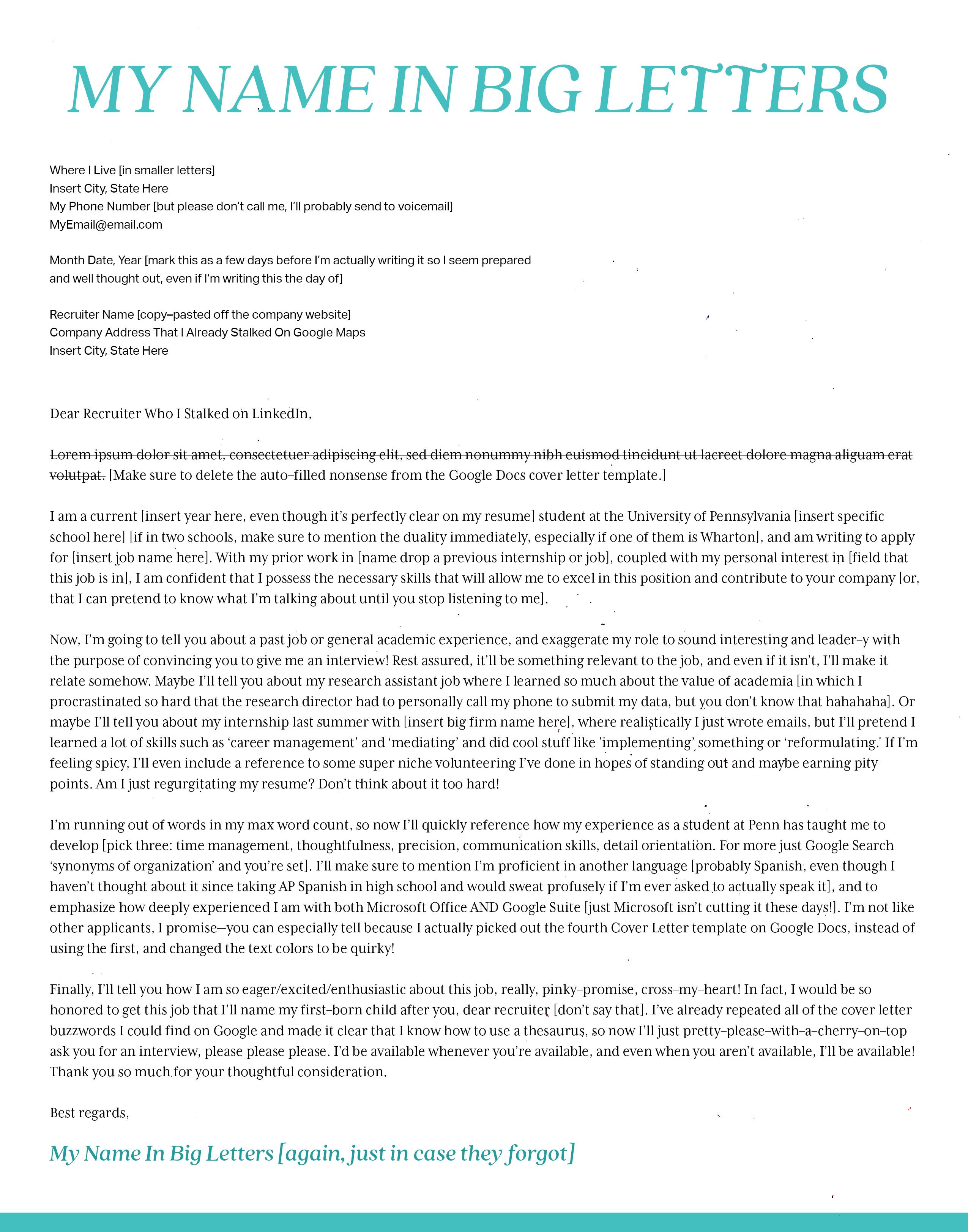 By DIANNA TRUJILLO MAGDALENO
By DIANNA TRUJILLO MAGDALENO
24 STYLE
The Agony and Ecstasy of Growing Up
What we can learn about adulthood from Dolly Alderton’s EverythingIKnowAboutLove and Kiley Reid’s SuchaFunAge
By LUIZA LOUBACK
Dolly Alderton knows what she’s talking about when it comes to adulthood—or at least what we’ve come to consider #adulting. Everything I Know About Love is a collection of diary entries, recipes, anecdotes, and ironic reflections of what she learned about parties, dates, work, life, and—most importantly— love in her adolescence and early twenties.
Alderton’s adventures and misadventures strike a chord with her generation, from the strategies for getting the attention of your crush on MSN Messenger, the teenage gossip that circulated on the platform, and the ridiculous behavior by boys and—a few years later—by men. Alderton shares her personal journey of growing up and coming to terms with adulthood. She talks about the challenges of financial instability, relationship issues, and mental health, emphasizing the importance of building a strong support network to navigate these challenges. Common anxieties abound.
The portrait of young adulthood that Alderton paints is instantly recognizable for those who’ve found themselves in the those same trenches, with its candid descriptions of eating disorders, bad relationships, and professional triumphs and failures.
On top of that, she captures the sentiment of nostalgia for a time that has passed, be it the 2000s of Dolly’s adolescence or the 2010s and its quintessential dresses from the Kate Moss for TopShop collection™. The book is an ode to the ephemeral freedom captured by friendships between 20–somethings. Alderton is caught in the full-speed hedonistic pursuit of experiences and fleeting moments. In some regard, she is a caricature of an adult, proclaiming, “Dear friends who I normally only ever get completely leathered with, I’d love to have you round to witness my attempt at behaving like an adult.”
While Everything I Know About Love recounts Alderton’s relatable musings of her formative years, her narrative packages adulthood in a cellophane of romanticism, making it almost fiction–like. On the other hand, Kiley Reid’s fictional novel, Such a Fun Age, brings a real depth to the complexities of adulting through the lives of its two main characters, Emira and Alix. Emira, a young Black woman, is
struggling to find her place in the world and make ends meet. Despite her college degree, she feels lost and uncertain about her future. Alix, a white woman and successful blogger, is grappling with her own insecurities and the challenges of balancing work and family.
In Reid’s novel, the complexities of race, class, and privilege are woven into a tapestry of human experience. Through the lives of her characters, she delves into the heart of what it means to be an adult in a world where systemic issues can shape one’s opportunities and experiences in very different ways. Emira even admits, “I think all adults have moments where they feel like they’re faking it.” Among Reid’s complex mosaic of adulthood, there exist these nuggets of relatability for all readers.
Alderton’s reflection highlights the importance of female friendships—women are able to see themselves in one another’s experiences, building an intimate feeling of recognition and support. On the flip side, Reid’s Such a Fun Age brings depth to those depictions, examining how complicated dynamics of power and privilege can warp these relationships. Beyond Alderton’s personal reflection on her twenties, there are a multitude of other adulting experiences that interface with the reality of race, class, and gender struggles. Subsequently, Reid seems to poignantly answer this question of what happens when our romanticized perceptions of adulthood are soured by reality. It is in Reid’s fictional accounts that we might find a more authentic mirror of reality and adulthood.
We turn to literature to both see ourselves reflected on the page and to lose ourselves in a reality foreign to our own. Ultimately, Alderton’s and Reid’s accounts of adulthood interact with one another, providing alternate perspectives on adulthood and reminding readers that the human experience is not a monolith. Both authors emphasize the importance of self-reflection and personal growth as one navigates adulthood, which, they insist, is a journey, rather than a destination. Both Reid and Alderton acknowledge that growing up and coming to terms with adulthood is a process that involves both joy and struggles, and ultimately, there’s no “right way” to do it. -

MAY 2023 25 #ADULTING
Graphic: Collin Wang
Act Like A Grown–Up
From

BY THE NUMBERS: POST–GRADUATION
$82,750
$85,000
ARE
62.5% of
anxiety and post-grad salaries
taxes
a checkbook,
into Penn students’ experiences and encounters with adulting. JUNIORS 34th Street Magazine surveyed 175 students on April 17 40.6% (71) First Years 25.7% (45) Sophomores 22.9% (40) Juniors 10.9% (19) Seniors By SOPHIA LIU 0% 5% 15% 12.5% 27.5% 30% 10% 1 2 3 4 5 6 7 CAREER CONSTERNATIONS How much career anxiety do you have on a scale of 1–7? 37.5% of juniors FILE THEIR OWN TAXES 47.5% of juniors CAN BALANCE A CHECKBOOK
internship
to filing
and balancing
delve
juniors
SUMMER INTERNSHIP
have a
YOU FINANCIALLY INDEPENDENT?
2021 Median Salary For Graduates Employed Full Time In The U.S. (680 responses)
Full–Time Employment Source: Career Services 2021 Undergraduate Report By School (2,076 responses) Continuing Education Seeking Employment | Other 78% 15% 4% 3%
2020 Median Salary For Graduates Employed Full Time In The U.S. (796 responses)
Median Salary
Time
The U.S.
responses) DATA
$77,500 2019
For Graduates Employed Full
In
(816
62.2% of sophomores know they are working instead of grad school after college
62.2% of sophomores have a SUMMER INTERNSHIP
SOPHOMORES
78.9% of first years plan on getting a summer internship or research opportunity

56.7% of first years have a SUMMER INTERNSHIP HOW OFTEN DO YOU THINK ABOUT HOW OFTEN DO YOU THINK ABOUT YOUR CAREER? YOUR CAREER?
FIRST YEARS
66.7% of seniors have a JOB OFFER LINED UP
COLLEGE BUBBLE
ARE YOU FINANCIALLY INDEPENDENT?
of seniors FILE THEIR OWN TAXES
“REAL WORLD”
HOW DOES ADULTING MAKE YOU FEEL?
of seniors CAN BALANCE A CHECKBOOK
“The idea of having control of every part of my life is terrifying.”
“There’s a lot that I feel unprepared for: credit, jobs, rent, etc. I’m learning, but it’s overwhelming alone.”
First Year Sophomore Junior Senior
“Genuinely feel like I wasn’t prepared for this... I feel very thrown to the wolves.” “I don’t want to lose my whimsy and conform. Pretending to be perfect for jobs just to afford to live is not fun.”
SENIORS
1 2 3 4 5 6 7 1.4% 9.9% 15.5% 14.1% 23.9% 29.6% 5.6% 0% 4.4% 4.4% 22.2% 35.6% 20% 13.3% 1 2 3 4 5 6 7 5.3% 0% 10.5% 5.3% 31.6% 5.3% 42.1% 1 2 3 4 5 6 7 CAREER CONSTERNATIONS
much career anxiety do you have on a scale of 1–7? CAREER CONSTERNATIONS How much career anxiety do you have on a scale of 1–7? CAREER CONSTERNATIONS
much career anxiety do you have on a scale of 1–7?
52.6%
How
How
57.9%
37.5% 21.1% 24.4% 16.9% 15.6% 25.4% 26.7% 36.6% More than once a day More than once a day All the time All the time Once a day Once a day Once a week Once a week
#ADULTING
With five years of experience being in therapy, I’d like to say I have a good grasp on life’s most complex questions. Lucky for you, I pay very close attention to my therapist’s answers, and I now consider myself qualified to step into the role of advice giver for you lovely readers based on questions you submitted to us here at 34th Street. I also took Intro Psych my first year, so I’m well on my way to being an expert.
Ask Arielle

How to cope with jealousy and other very serious answers to other very serious questions
By ARIELLE STANGER
34 TH STREET MAGAZINE 28 STYLE
Dear Arielle: How do you cope with jealousy?
— Green with Envy
Dear Green with Envy: Jealousy is a disease babe <3 Get well soon! That being said, there are totally ways to ease the sharp, gut–wrenching, mind–numbing pangs of bitterness that consume your entire being and force you back into the same social media rabbit hole, sick–to–your–stomach spiral of fierce self–hatred that leaves you sobbing on the shower floor and grasping the curtain for support in the wee hours of the morning when no one else is awake to see you suffer.
So what you’ll want to do is really super simple. First, get to the root of the problem. What or who are you jealous of? Maybe it’s the girl who so effortlessly moseyed on up to the boy you were right about to make a move on, stuck her vape in his mouth, and had him exhale into hers? Right on the dance floor? How did she make it look so easy? I— sorry, I mean you—was/were totally getting vibes from him, and it would’ve happened if she hadn’t waltzed in there with her stupid teeny tiny top and her stupid Puff Bar.
Now that you know why you’re feeling this way, talk to a trusted friend and put the situation into perspective. Hey, at least you’re not the one addicted to nicotine! Maybe you dodged a bullet. He’s kind of a slut, anyway. But God, he looks like an excellent kisser. No, wait, focus! At the end of the day, he’s just a guy. There are plenty of fish in the sea, and just remember that you’re a catch *wink wink.*
End by expressing gratitude for what you do have. Number one, healthy lungs. Number two, friends who look out for you. Number three, not a split end in sight. See, you’re doing great! No need to feel jealous when you can recognize all the good in your life.
Dear Arielle: After a hookup, if they don’t respond to messages, what do I do and what should I say when I see them in public?
— Ghostee
Dear Ghostee: Penn hookup culture leaves a lot to be desired, don’t get me wrong. If you’re not one of the lucky ones who gets cuffed after a date night scheme, you’ve probably experienced getting ghosted. When that happens, there’s two courses of action you can take: one confrontational and one avoidant.
We’ll start with the avoidant one because that’s more my speed, and I even have an anecdote for you! Recently I crossed to the other side of the street—even though I was already on the side I needed to be on—because I saw a past hookup up ahead. I highly recommend just turning around in your tracks, even if it’s inconvenient. This is a good way to demonstrate that they wronged you, as you’re showing them that your highest priority, above timeliness, routine, and schoolwork, is getting the fuck away from them. They’ll definitely notice this and start to fall in love with you because they can’t have you.
Now for the confrontational approach, which I don’t recommend for the weak–hearted. Go up to them. Say hi, how are you? Ask them what’s going on. Tell them that you had a nice time and if they aren’t interested in hanging out again, that’s totally fine—but that you deserve their respect and honesty, and they should just tell you straight up.
Some people are only interested in a one–night stand, and that’s okay (as long as they aren’t making false promises, because then they’d just be a liar). If all else fails, just smile and wave. It’s only weird if you make it weird.
Dear Arielle: How do you figure out what you really want to do with your life?
— Lost Boy
Dear Lost Boy: Lucky for us, Penn has a career center! Just kidding, they’re probably gonna tell you to go into consulting no matter what you’re actually interested in.
Honestly, the best way to figure out what you really want to do with your life is to try different things. One of the easiest ways to learn what you like is to narrow it down by learning what you don’t like. Say yes to new opportunities, make mistakes, quit and start all over again. Every opportunity can lead to a new discovery if you know where to look.
If you still have time in college, try taking a course in a different department. You might be pleasantly surprised at the niche cross–disciplinary classes that Penn has to offer, i.e., Literature and Medicine or Cinema and Politics. They combine various interests and may put a new spin on a subject that’s bored you in the past, paving the way for professions you never knew existed.
If you’re graduating soon or have already, just remember that your first job out of college doesn’t have to be your job forever. Adult life isn’t linear like all our years of meticulously planned curriculum might have led us to believe. If Penn is good for anything, it’s teaching us how to network—so cast a wide net, build connections, and don’t be afraid to ask for help.
Of course, you could always try consulting. I hear it’s pretty easy. -
MAY 2023 29 #ADULTING
Photo: Anna Vazhaeparambil Design: Ani Nguyen
By WALDEN GREEN
The Grad Laws
At Street, we wear our influences and our college student misadventures on our sleeves. That’s why I’ll tell you straight up that the genesis for this article wasn’t fully original. It’s our version of The Cut ’s “The New Rules,” which presents 140 etiquette guidelines for modern life post–COVID–19. The difference is our list was written with one specific group in mind: Penn’s graduating senior class. You might ask: What business do a bunch of college students have giving other college students advice about the “real world?” To which I’d say you’re absolutely right, and…


And who better to get through to this notoriously unreachable demographic than a jury of their peers, passing sentence on the bad behavior we’ve witnessed, been on the receiving end of, and even—at our lowest moments—inflicted on each other. And though the advice of any one of us might be insufficient, together we represent a veritable think tank, a range of expertise broad enough to account for almost any scenario you’ll encounter out there. Or at least 69 of them, which is the final count because it’s equal to 34 times two plus one. Not for any other reason.
LOVE
1. Bringing a hookup over to the studio apartment you share with two roommates is gonna be a much less appealing proposition.
You’re now a little fish in a much larger dating pool that includes plenty of competition with higher–paying jobs and their own personal bedrooms. Don’t expect an offer of silently boning in your twin bed to stand out from the pack.

2. Stop normalizing talking stages! In the words of a very wise woman: “I think like the biggest thing that like annoys me in like the whole dating world is like fucking talking stages, like that shit’s so annoying, like the whole like and just like the inconsistency in them—like I literally like hate that like so much … Just like the fact of like just you’re like … in like talking stages and it’s just like you’re like labeled that, and it’s like people like
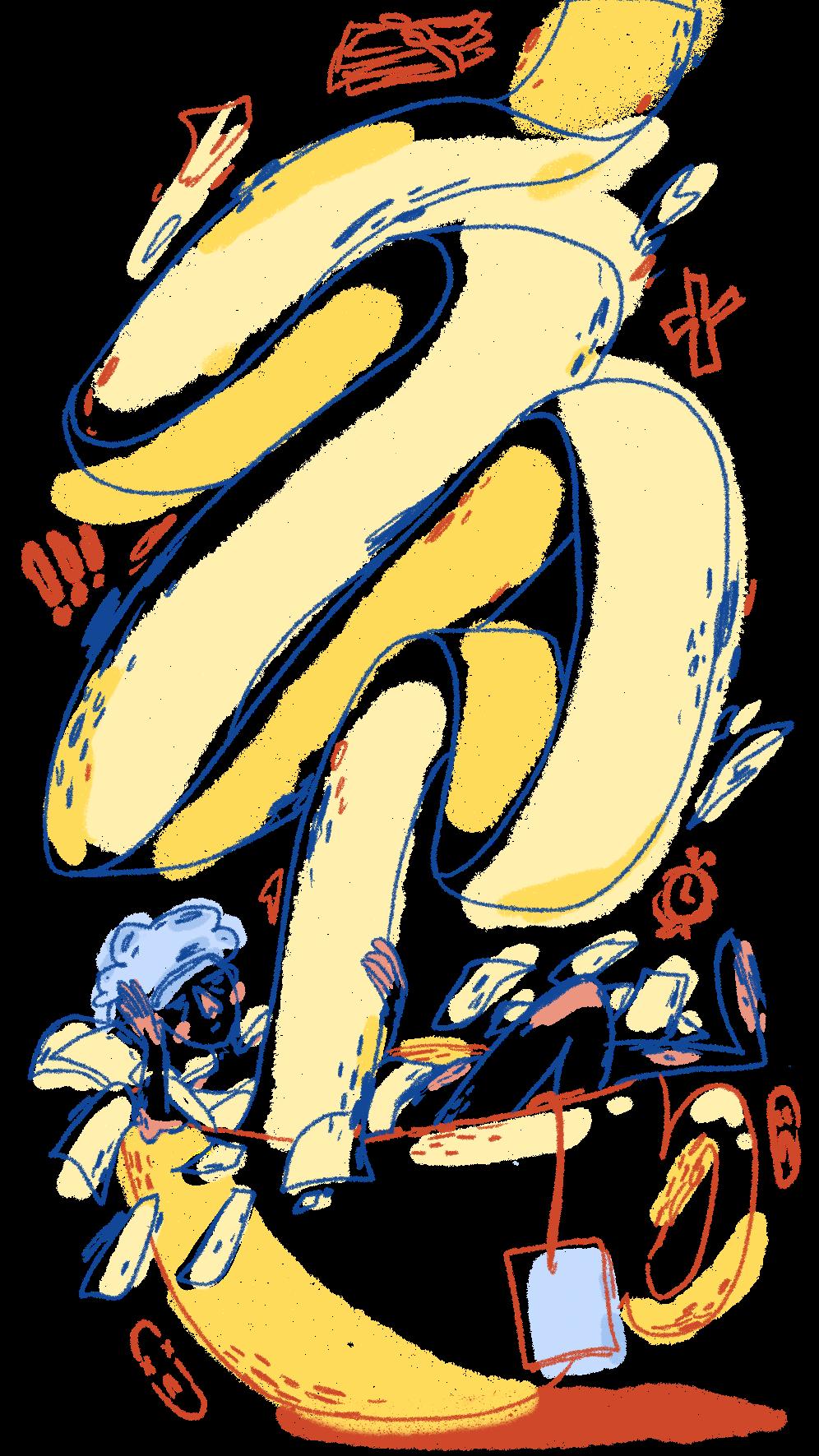
34 TH STREET MAGAZINE 30 FEATURE
Words of wisdom to Penn’s graduating seniors, from one extremely unqualified editor–in–chief.
are considered like, you can’t like, you’re just like confused and like most of the time like the girl get like gets attached or something, and they like see it like it’s gonna gonna lead to a relationship and it’s always not.”
3. Delete Snapchat. It’s stupid. The only reason for keeping the ghost app around is receiving horny snaps from guys you went to highschool with. You know—”I had a dream about you last night” or “Will you be home at all this summer?”
4. Find a drink you like that’s not your standard rum and coke, vodka and sprite—call it your fancy drink of choice. When meeting people at bars, a Long Island iced tea won’t quite cut it.
5. There will be fewer sceney places to hunt for hook–ups.
I’m using “sceney places” here to mean any pre–planned event including a contingent of people you know semi–well, at least some of whom probably share your interest in having messy, inebriated sex afterwards.
6. Understand the nuances of ghosting ethics.
There’s nothing wrong with two people mutually deciding not to send follow–up texts after an underwhelming date, but if someone’s keeping the line of communication open while you’ve lost interest, you have a responsibility to let them off the hook.
7. In the words of my old choir director, articulate!
Couples of the world, talk to each other, I beg of you. Because if you don’t talk to each other, you end up talking to me, and I only have so much time.
8. You have to communicate in the bedroom, too.
I know we all have the fantasy of that guy who’ll wordlessly take charge and do everything perfectly, but let’s be honest. If you want to be choked, just say you want to be choked.
9. Try not to date friends of friends challenge … IMPOSSIBLE (one hr version)
Yeah, I know they’re the easiest option, but it puts your mutual friend(s) in the awkward position of mediator, passing


back and forth messages like you’re in middle school. This law is suspended for fucking friends of friends, so long as you…
10. Learn to exist cordially in the same room as a person you fucked, fucked over, or fought with.
We’re not asking you to be best friends, just to be polite. Plus, other people won’t want to date you if they think it’s an invitation for drama.
11. Don’t go to the orchestra with your recent ex. Politeness can only take you so far.
12. Avoid becoming a boyfriend girl or a girlfriend boy at all costs.
If you stop hanging out with your friends after getting into a relationship, they will grow to resent you.
13. Stop being such a bitch (gender inclusive).
Some call it negging. Some call it being catty. Some (me) just call it a good time. Here’s the thing we all agree on: Nobody likes being on a date that feels more like being berated or, even worse, one of those kung fu movies where you emerge apparently unscathed only to begin gushing blood the minute after a fight. It’s easy to go power–mad when you’re in total control of the conversational dynamic, but let the flirting come first—not the other way around.
14. After a date, don’t debrief everything with your friends right away.
I know your monkey brain wants immediate feedback on a potential mate, but give yourself some time to process and form your own opinions first.
15. Never assume that a man has given conscious thought to a decision when he could’ve given no thought to that decision.

Chances are, he hasn’t. This will do wonders for the amount of time that you invest into trying to read between the lines of his late night “u up?” texts.
16. Post–nut clarity is a helluva drug. Guys: Resist the urge to up and bolt immediately after you finish. Try waiting a few minutes to reach a more settled mental state instead. For the people that love them—if a man’s attitude or interest seems
to flip on a dime after sex, don’t beat yourself up thinking it has anything to do with you personally.
17. What feels like an eternity in “waiting for a hot person to text me back” time feels like nothing to the person you’re waiting to hear back from.
If you feel strongly about consistent and timely responses, that needs to start with you I fear.
18. Class crushes are different from work crushes.
Work crushes are higher risk, higher reward. Acting on them can lead to much more, but can also majorly screw up the vibes at your job. Weigh your options accordingly.
19. Sleeping up the corporate ladder sounds really hot in theory; is only messy in practice. Just take this one on faith and don’t ask me to elaborate. Suffice to say, we don’t all get to be Sutton and Richard.
20. Find out if someone is taken before investing a lot of time (say, a year) into crushing on them.
This is courtesy of one of our section editors, but I won’t say which! Not to protect their anonymity; just because it could absolutely apply to more than one of them.
21. In an ideal world we’d age out of our unattainable crushes, but don’t hold yourself to that standard.
If I could have any superpower, it would be to never pine after a straight man again. Unfortunately, it doesn’t seem like that’s happening any time soon, so I’ve chosen to stop beating myself up over it, and for your own sanity I advise that you do the same.
22. Straight people: Don’t tell your gay friends you wish you were gay.
You’re actually totally right—just not allowed to say it. Sorry <3
23. Brush and floss twice a day. Not in the way where you tell your dentist you do when really you brush once daily and floss every other day. Did you know they can also tell if you’ve given head?
WORK
1. The hierarchy of frats and sororities doesn’t mean anything out there in the real world … mostly.
That said, if some LinkedIn stalking turns up
MAY 2023 31 #ADULTING
that a recruiter or hiring manager was also a member of the honorable brotherhood of Alpha Epsilon Pi, don’t hesitate to play that up.
2. Getting fewer hours of sleep isn’t an accomplishment.
Stop wearing those eye bags like a badge of pride, and start getting a full eight hours on the regular. Your coworkers are worrying about you!
Ed. note: This does not apply to graduates entering the computer science field. Check your blue light glasses at the door, and thanks for inventing the internet—I’m a huge fan of your work.
3. Take some data science courses before it’s too late.
I don’t like it any more than you do, but knowing at least one coding language (or at the very least being Microsoft Excel–literate) is a clutch skill to break out in an interview.
4. Snakiness is a two–way street. Penn is big enough that burning one bridge won’t close off every opportunity to you, but word can (and will) get around quickly out there. Not to mention, stepping on necks to get where you want to be gives others the license to do the same to you. Lift as you climb besties!
5. Don’t air all of your personal information (and especially personal beef) on social media.
I know as Gen Z we’re all sort of chill with existing in the panopticon, but being overexposed online is rarely, if ever, a good look.
6. Competition isn’t always the answer. I know it’s hard to internalize, considering we’ve been taught the exact opposite lesson by Penn and probably before coming here. But there are enough seats at the table. As Al Gore once said, “There’s an old African proverb that I made up. ‘If you want to go quickly, go alone. If you want to go far, go together.’ We need to go far, quickly.”
7. Know who you can talk shit to, and who you can talk shit to them about. The art of bitching is a storied one, but striking the delicate balance between the necessary venting of frustrations and creating a toxic work environment can be tricky. Make sure you know exactly who to
count on not to spill. Alternatively,…
8. Complain about work to people you don’t work with. Obviously don’t make your friends/significant others into your personal HR department, but there’s no safer void for your grievances than someone who has no investment in the situation whatsoever.
9. Being in a consulting club doesn’t make you a real consultant. Self–explanatory, but let me take this opportunity to ask: What are consultants? And more importantly, does the world need more of them?
10. Your job isn’t like class, part one. By which I mean, you actually have to show up.
11. Your job isn’t like class, part two. TAs can be your bestie, but your boss shouldn’t be.
13. Your job isn’t like class, part three. Most of your classes will have something to do with your major. Your job probably won’t.
14. All cover letters are kind of bad—yours just has to be bad in the right way. The key word here is legibility. Anyone—be they human or AI—who’s reading your job application should be able to extrapolate whatever you want them to take away with minimal effort. AKA bullet points are your friend!
15. The best way to approach an interview is with the goal of having fun. That energy will be contagious, and giving someone a general warm and fuzzy feeling is way more valuable than any qualification.
16. Pick your de–facto email signoff and stick to it.
Unless you’re a high school theater director, “cheers” is not an appropriate choice.
17. Don’t partake in Jerry slander, lest you be chosen as the new Jerry.
See Parks and Recreation, season five, episode 20 for more on this.
18. If you have a job that’s hard to explain to people, don’t get frustrated when people ask you to explain what you do. Here’s lookin’ at you, quant.
19. When possible, nepotize Penn students into internships.

This is a controversial one, so bear with me.
mer opportunities can be, and by that same token the feeling of relief when you discover that you went to the same school as someone at the company where you want to work. If you’re graduating directly into a job, there’s a good chance that a Penn alum helped you out to get where you are. Pay it forward when you’re in their shoes.
20. You should probably be saving at least some of your disposable income each month.
On the upside, you might also die tomorrow, so if buying something for yourself or someone else is going to make you happier, I say go for it.
21. Your first job isn’t your forever job. What matters is that you’re making money (for rent and groceries and such), developing skills, and forming strong relationships with your superiors. When the positions you want open up—and they will open up sooner or later—you’ll have the security and experience to make you a strong applicant.
22. Don’t give back to Penn after you graduate.
They’ve already taken enough of your money. I don’t care that you’re making seven figures—donate it to charity instead. And if you’re concerned about your future children attending your alma mater, take it from me as a legacy student whose dad never gave a cent to the University and still got in with a B– in AP Physics—they’ll be just fine.
23. It’s never too late to change your path.
Think about all the people who knew what they were going to do from a young age and stuck to it: Richard Nixon, Genghis Khan, Elizabeth Holmes. Not great company to be in, is it?
LIFE
1. Meeting friends will get much, much harder … prepare yourself accordingly.
Join an adult dodgeball league! Take up crocheting! Pretend you have a rare neurodegenerative disease and go to a support group (this is actually just the plot of Fight Club). What’s critical is that

34 TH STREET MAGAZINE 32 FEATURE
work isn’t your only place to meet new people.
2. Use astrology as a litmus test—it’s a good way to feel out when people take themselves too seriously.
Yeah, it’s probably bullshit, but don’t tell me I’m not giving Scorpio sun, Gemini moon, Gemini rising to a T.
3. Your major is no longer one of the first five facts to introduce about yourself. Try your big three instead!
4. As above, no one cares about your dual degree.
They’ll probably care more about your favorite sex position.
5. Be intentional and enthusiastic about the media you consume.
Read books, watch movies, and listen to music. You’ll find that many of the more senior people you encounter, including the ones you’ll have to network with, prefer talking about art to talking about their jobs.
6. Learn all of the ways to chop an onion. The easiest way to make the meals you cook more impressive (and more delicious!) is with a base of onions, garlic, and olive oil. This is especially true for pasta. And chances are you’ll be eating a lot of pasta.
7. Trader Joe’s won’t be a trolley ride away forever.
I’m not even prepared for this one yet, which hardly puts me in a position to give advice. Just start coming to terms with it now. I’ll be doing the same.
8. Choose a problematic fave to drunkenly defend at any opportunity.
Dibs on Alison Roman. Gwyneth Paltrow is no longer eligible because she’s innocent, you hear me!
9. Speaking of getting drunk, don’t be the one to make your friends hold your hair back.
It wasn’t a cute look in college, and it certainly isn’t now.
10. That said, always be the friend that’ll hold back the hair.
Human scrunchies, keep fighting the good fight. There’s a special place reserved for you in the afterlife.
11. For god’s sake, no more BORGs. They say it’s not alcoholism until you graduate. Y’all … this behavior was never not a drinking problem.
12. If you mention Sink or Swim, don’t be surprised if people think you need a lifeguard.
In other words, find a new place to roll.
13. If you offer to get lunch with someone, they’re gonna think you actually mean it, and may even ~shudder~ try to schedule something on the spot.
Same goes for grabbing coffee, which out in the real world means actually grabbing coffee.
14. You’re in charge of filling your own free time now.
Prepare for the fact that every weekend won’t be a buffet of a cappella shows, dance troupe revues, and stand up comedy sets, all featuring friends that you should probably be going out to support. On the plus side, you’ll be able to discover what kinds of entertainment you genuinely enjoy, instead of whatever’s foisted upon you through social obligation.
15. Also, make time for yourself. There’s a difference between working hard and being overcommitted; one will be rewarded, the other will only burn you out.
16. Turn on auto–caps for text messages. Neat communication is one of the hallmarks of adulthood. This is the same reason you should have a dedicated email signature and especially set up your voicemail box.
17. The golden rule: Treat humanities majors the way you’d want to be treated if you were a humanities major. There are like two to three responses you’ll get to telling someone you’re a humanities major (not that I would know— I’m technically a STEM baddie). The dubious “What do you even do with a degree in that?” The overly enthusiastic “Oh my gosh, that’s what I studied too! It’s so rare to find someone else who majored in archaeological futurism.” For the rest of us, stick to a simple, “That’s pretty interesting, and I bet it’s definitely applicable to your career field of choice.”
18. It’s time to exit the womb of your political and ideological echo chambers, and no, this isn’t me being some capitalist–bootlicking classical liberal. You’re going to encounter people whose stances on the “dinner party no–no topics”
your own. A little friendly debate can be fun, but in most cases I recommend taking a de facto stance of passive tolerance. Of course, being generally gracious is vastly more important than putting up with someone’s particular beliefs. If you or your identity has been disrespected, it’s your full prerogative to cut that person out of your life. And ask around before taking this to a higher–up or HR department—chances are you’re not the only one who’s felt this way.
19. Call your friends.
They miss you. I know it feels like they don’t, but think about it this way: You probably miss them too, even if you’re not making the time to get in touch.
20. Don’t come back to campus for Patty’s darties.
Beyoncé famously asked, “What’s worse, looking jealous or crazy?” To the guys who party at their old frats for any event other than homecoming, I want to know what’s worse, looking desperate or creepy?
21. For recent grads: Avoid wearing Penn merch at the airport.
It’s fine once you don’t look like a student again, but your early twenties is too young to already be reliving your glory days.
22. It’s not worth it to live in Manhattan. Branch out to Brooklyn, you cowards!
23. For Penn graduates, our “real world” isn’t that real at all.

The majority of Ivy League students have had a very unique life journey up to this point, and many of you will be cushioned from any significant blows to your life or career moving forward. This means you’ll be able to speak the language of the elite, for better or worse, but always remember that the world you’re walking into is very different from the one perceived, lived, loved, and hated by most. -
Illustrations: Ani Nguyen
MAY 2023 33 #ADULTING
Girls Will Be Girls
“every episode of girls (hbo) is a aesop’s fable, the moral of which is, ‘wherever you go, there you are’”
– @bartleby_era on Twitter, February 25th, 2023 2
In a recent New York Times article, journalist Callie Holtermann writes about the resurgence of Lena Dunham’s HBO dramedy Girls. Holtermann describes Girls as a period piece, of sorts. The period is the early 2010s, and the subject is the monolith of millennial post–grads living in Williamsburg walk–ups. For many, rewatching Girls is comforting, affirming the highs and lows of their twenties. The characters are flawed in ways that make them undeniably relatable.
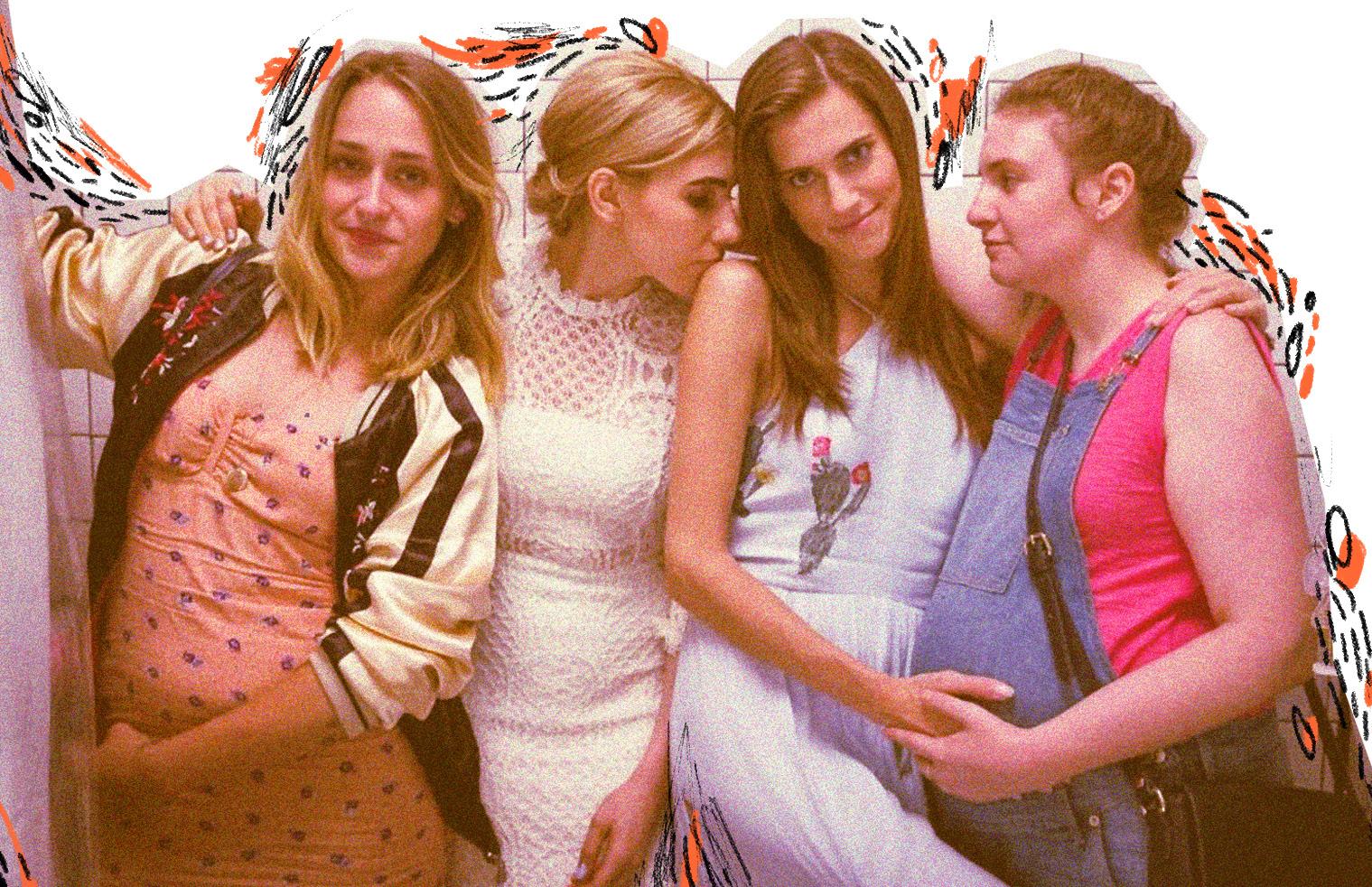 By KATE RATNER
By KATE RATNER
For Gen–Z viewers, however, Girls challenges us to draw the line between comfort show and cautionary tale. Hannah Horvath is an imperfect lead who is loveable and loathsome all at once. When she learns her college ex–boyfriend Elijah is gay, she somehow manages to make it all about her. Soon after, the two become roommates, forming arguably the greatest lovers to friends trajectory in television history.
Even when we relate, we despise the four main characters’ most insufferable traits: Hannah Horvath’s narcissism, Marnie Michaels’ selfishness, Jessa Johansson’s tendency to self–sabotage, and Shoshanna Shapiro’s prudishness. We hope to not embody the fictional Oberlin College grads, but sometimes, we can’t help ourselves.
As a sophomore in college, watching Girls didn’t give me a model for my post–grad years. Instead, I felt the pressing urge to be different from Dunham’s semi–satirical portrayal of her younger self: a struggling writer learning to be financially independent from her professor parents. She’s impatient, witty, and struggles to keep a job without getting bored or lashing out. She’s a self–proclaimed feminist and social justice warrior, often falling short and blaming others for her wrong–doings. Her dry sense of humor, affinity for colorful and printed clothing, and arms decorated with patchwork tattoos paint her as the perfect 2010s millennial.
While others have the luxury to fear becoming a Hannah Horvath, some of us have
FILM & TV
Ten years later, Lena Dunham’s brainchild still defines the postgrad experience – whether we like it or not
to contend with the possibility that we might already be one. Anytime we quietly celebrate someone else’s failure or give up on a task midway through, we become Hannah, abandoning the Iowa Writers’ Workshop after just a few weeks or replacing grief over the sudden death of her editor with the question of whether her audiobook will still be published.
For its time, Girls was revolutionary for not being so revolutionary at all. Dunham explores love, sex, friendship, professionalism, and New York living through the eyes of upper middle–class post–grads. Sound familiar? But what made the show so unconventional was the way it held up a mirror to its audience. Girls was watched and written about by millions of Hannahs and Marnies, forced to reckon with the realities of their own slow careers, discouraging love lives, and expired friendships. All the while, the show’s laughable lack of representation and the characters’ slew of missed opportunities and first–world problems embody an eerily familiar kind of white privilege.
While the first season of Girls premiered in 2012, it’s not difficult to envision Hannah and her dysfunctional entourage beginning a post–Penn journey in 2023.

Horvath was a member of the Philomathean Society, a Kelly Writers House frequenter, and an overall insufferable English major. Shosh wasted her afternoons away studying
in Huntsman Hall. She spent her junior year summer as a McKinsey summer analyst but graduated with no return offer. Marnie was uptight but misguided. Her face was at every GBM on campus but when met with the question “what are your plans post grad?” she could only shrug her shoulders. Jessa was the elusive international sorority girl. Perched outside of Arch, she’d stare down passersby, blond locks blowing in the wind.
In a Penn world, the unlikely four met during freshman year NSO and remained friends throughout their college years, relocating to New York City post–grad. However, we can’t deny that the group has outgrown each other, forcing friendships that are no longer fulfilling. The episode that demands the most reflection on our own friendships is season three’s “Beach House.” In it, the group visits a family member’s summer home in the Hamptons for a relaxing girls weekend gone wrong. After spewing drunken insults and confronting the pain of growing apart, the four sit in silence waiting for the bus to take them back to their separate city lives.
This episode, and several others, assure us that relationships aren’t capable of being the same after college. In season five, Marnie reconnects with Charlie, her love–smothering ex–boyfriend, after ending things four seasons earlier. They reignite their romantic spark and vow to run away together until Mar-
nie finds a heroin needle in his jean pocket and realizes their love was not meant to stand the test of time.
It’s difficult to accept that no matter how many years have passed since Girls’ debut, post–grad life looks hauntingly similar. We still fear spending four years earning a Bachelor’s degree just to relocate to a bigger city with higher rent prices and lower paychecks. Alongside this harsh introduction to the “real world” come the steps we take to understanding who we are. How are we expected to resist self-absorption, sabotage, and the envy of others when our only priority is to fend for ourselves?
Next comes the question: does it have to be this way? Perhaps, Gen–Z viewers can lean into Girls as a work of nonfiction and fiction. Girls shows us not what we could be, but what we should fear becoming, and offers us the choice to change our path.
During my first and only binge–watch of Girls, even the most uncomfortable moments strengthened my emotional attachment to every character. The show requires us to look closely at our ugliest parts but, at its core, Girls tells the story of a group of young people just trying to figure it out.
Maybe that’s why I can’t seem to get myself to finish the last two episodes; in fear of the show being over. When that happens, I’ll finally have to figure things out for myself. -

MAY 2023 35
Design: Ani Nguyen Le
Six Movies About Academia, Angst, and Adulting
By ANNA O’NEILL–DIETEL
It may be hackneyed to say this, but college really does go by in a blink of an eye. One minute you’re shading your eyes on your New Student Orientation campus tour in 95 degree heat, maybe a little hungover. Four years go by and the next moment you’re scrolling through Indeed job listings in your first apartment. One thing is certain—grappling with adulthood is hard.
Like the humanities student that I am, my favorite way to deal with impending postgrad angst is watching movies about the subject. Here are my top six movies that deal with the job hunts, family drama, friendships, and romances that come with adulting. Whether in the form of a thoughtful rom–com or an edgy social critique, these films encapsulate the young adult experience, and they make you feel a little more prepared for what awaits after your degree.
Frances Ha encompass-

es all of the struggles and delights of life after college. The plot follows Greta Gerwig as Frances Halladay, a semi–employed dancer living with her college pal in New York City. While Frances’ character errs on irritating, Gerwig steers her mishaps in job hunting and making rent toward endearing. You’ll silently root for her as she drifts out of touch with her best friend and strained romantic relation- ships. This movie effortlessly captures the sometimes–fragile love between best friends and the less than graceful moments of postgrad life. Whether Frances is running to an ATM in the middle of a dinner date because she still doesn’t have a credit card or slinking back to live with her parents, you’ll just want to give her a hug and tell her that life will work out—even though you’re never sure that it will.
Sorry to Bother You (2018)
Equal parts hilarious and unsettling, Sorry to Bother You is the surrealist social critique you didn’t know you needed to watch before entering the workforce. The film takes us along 20–something Oaklander Cassius “Cash” Green’s fever dream of ascendance from telemarketer to millionaire. The twisting plot provides commentary on race, organized labor, and capitalism.
The world–building in the film is worth a watch alone, and you’ll laugh (if uncomfortably) at a possible indentured servitude ring, a Wipeout–like reality TV show, and animated horse monsters. You’ll find yourself both rooting for Cash as he climbs the social ladder, and wishing you can reach out and tell him to retreat to the safety of his garage bedroom as he grows closer to the top.

34 TH STREET MAGAZINE 36
FILM & TV
These six films, which range from playful rom–coms to satirical social critiques, all have something to say about adulting.
Frances Ha (2013)
Graphics: Katrina Itona
The Farewell (2019)
What’s more adult than grappling with mortality? That question is at the center of Lulu Wang’s film, based on her true–to–life radio story What You Don’t Know. Wang’s movie follows a Chinese–American family who learns that their grandmother only has a few months left to live. The film stars Awkwafina as Billi, an aspiring young writer living in NYC. The movie opens with Billi licking her wounds after a rejection for a Guggenheim Fellowship. When her parents inform her that they are not telling her grandmother about a terminal lung cancer diagnosis and instead are visiting her in Changchun, China, Billi is skep tical. What follows are painfully awkward family gatherings as Billi’s cousin decides to hold her wedding in Changchun in order to provide a reason for the family to gather. While the premise of Billi’s family’s gathering may seem outlandish, the movie reflects the universal experience of finally being “let in” on family secrets.
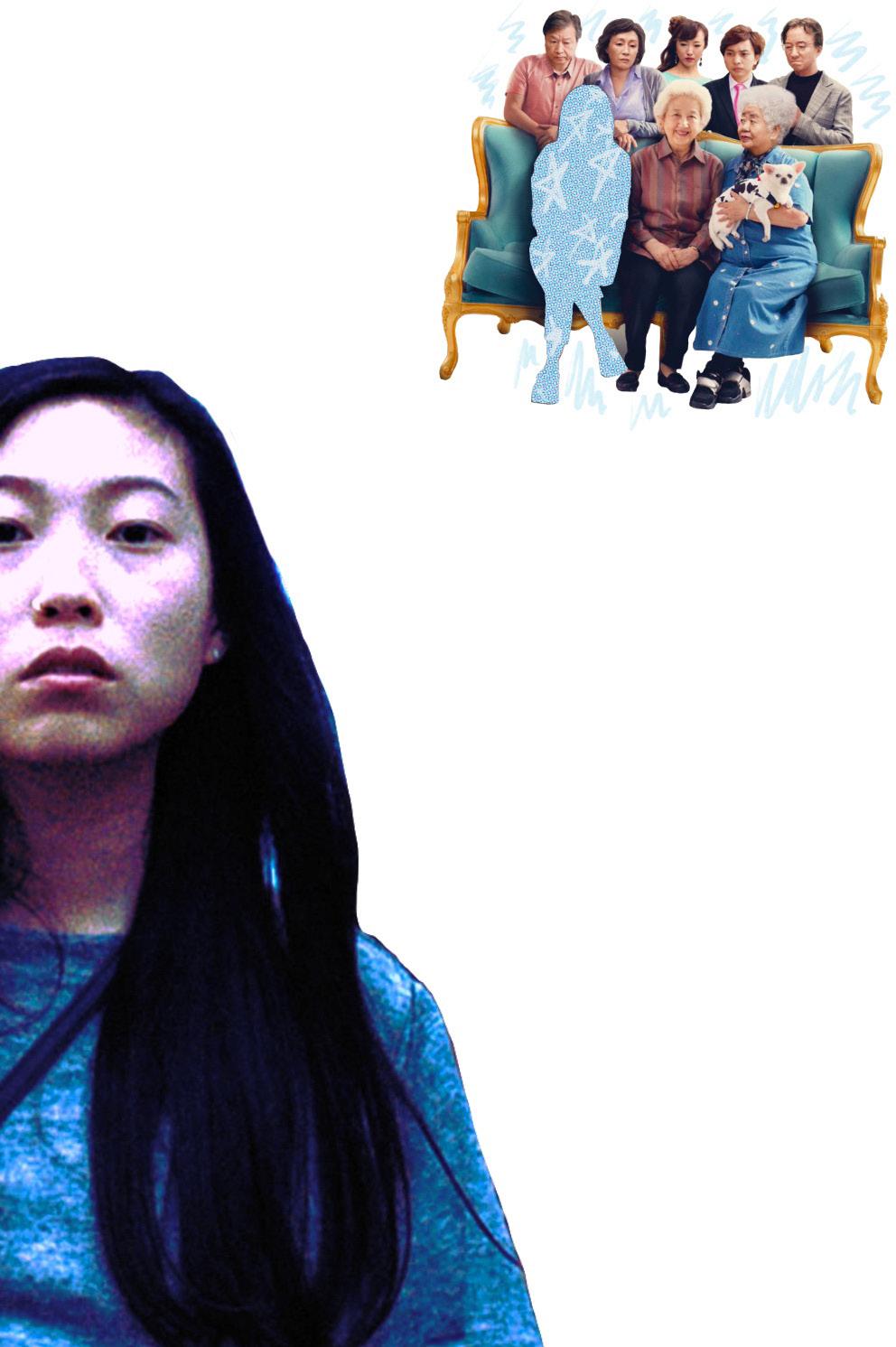
Into the Wild (2007)
Though it’s a popular required text in US high schools, I promise Into the Wild is worth revisiting post–AP Lit in the context of postgrad life. Within the first ten minutes, it flips adulting on its head and tells the story of surviving. Based on Jon Krakauer’s non–fiction book of the same name, the movie chronicles the life of free spirit Chris McCandless. The film opens with Chris, played by Emile Hirsch, at his Emory graduation. To his parents’ dismay, McCandless decides to leave behind the promise of a reputable job. Burning his social security card and driver’s license, he travels across the country with the ultimate goal of reaching rural Alaska. The movie begs the question of what should be sacrificed for a dream, and who is worth keeping in your adult life.
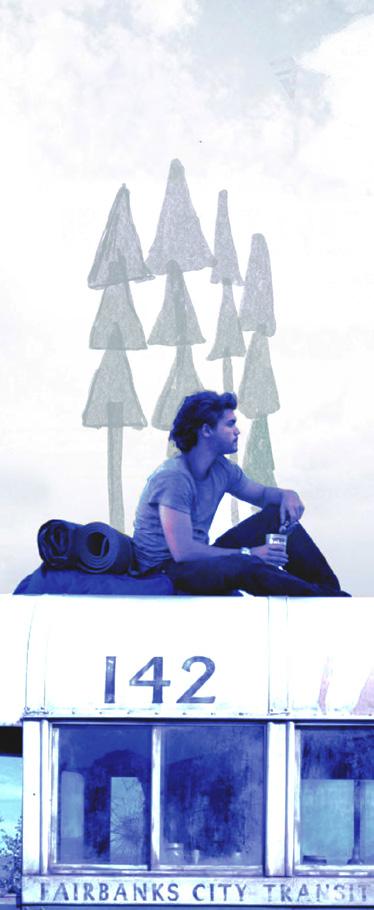
(500) Days of Summer (2009)
While it basically functions as a playbook for the manic pixie dream girl trope, (500) Days of Summer earns its place on this list. As long as you can overlook the lack of depth of the female love interest, the movie is a poignant depiction of young professional love. The movie follows Joseph Gordon–Levitt’s Tom, a white–bread greeting card designer and self–described “perfectly adequate handsome” guy. He falls head over heels for Zooey Deschanel’s commitment–weary Summer. When she rejects him after 500 days, ahem, the title, he makes it his mission to retrace their relationship. The movie captures the struggles of pursuing a dream career, and the sometimes magical, sometimes doldrum moments of young adult love—and how it feels to overanalyze them.
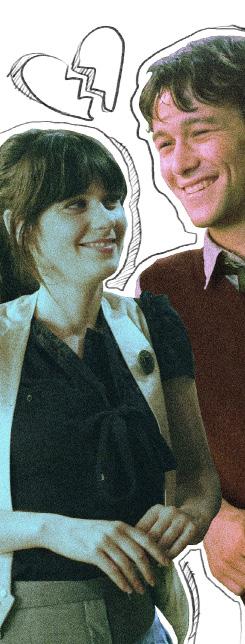
The Graduate (1967)
This groundbreaking romantic comedy is perhaps “the” adulting movie. Based on the 1963 novel of the same name, it stars Dustin Hoffman as Benjamin Braddock, a recent college graduate who returns to his family’s Los Angeles home, unsure of what he wants to do with his life. His uncertainty is heightened by the suggestions from well meaning (and–well–to–do) adults in his life. He begins an affair with a married woman, Mrs. Robinson, spending his days at his parents’ pool and his nights with her. But things go awry when he violates Mrs. Robinson’s only demand: that he not date her daughter. This movie has all of the hallmarks of a romantic comedy: enemies to lovers, grand declarations of love, and an interrupted wedding. But the movie is more than that. With a satirical bite, it lampoons young adult yearning and the unnecessary pressure on grad- uates to determine their life courses. With playful cinematography and a killer sound- track by Simon and Garfun kel, The Graduate is a delight to experience, despite Benja- min’s icky advances. Whether you find Benjamin to be an insufferable creep, or a little too relatable, you need to watch this movie. -

MAY 2023 37 #ADULTING
Finding a Friend in Existential Modern Art
 By ANGELE DIAMACOUNE
By ANGELE DIAMACOUNE
The way we interpret art informs our connection with it. From one person to another, our interpretations may differ, but one thing remains the same—art is, at once, both our emotional window and mirror. The most beautiful things about art are the endless ways it can be formed and understood. Often, it feels like the blank canvas is the only medium through which the complexity of our emotions can be captured; amongst the worst of them, existentialism. It allows for an avenue through which existential dread, or existential euphoria (hair pulling, amongst other things) can be reflected upon and even created.
This emotion has stood the test of time, finding its way into some of today’s most popular art pieces like the “Can’t Help Myself” robot or “Round Table.” Such artwork seems to perfectly capture what it feels like to be isolated in this uncertainty in ways that no other popular form of media can. The connection between art, existentialism, and “adulting” seems like such a niche and odd phenomenon, but really, consuming art has always been highly personal. Through the test of adulthood, in fact, “art”—reliable and understanding—becomes a friend.

34 TH STREET MAGAZINE 38 ARTS
As Somerset Maugham once said:
“Art is a manifestation of emotion, and emotion speaks a language that all may understand.”
SALAD DAYS
Fryd Frydendahl
Photo courtesy of Marrow Press
Some of the most resonating emotions viewers felt while watching this robot’s plight to an end were sympathy and sadness: one commenter even stated, “No piece of art has ever emotionally affected me the way this robot arm piece has.” Yet, it isn’t Ivan Kramskoi’s “Inconsolable Grief,” or even Edvard Munch’s “The Scream.” It’s a robot arm, and it’s one of the most emotionally effective pieces of this decade. Head–scratcher.
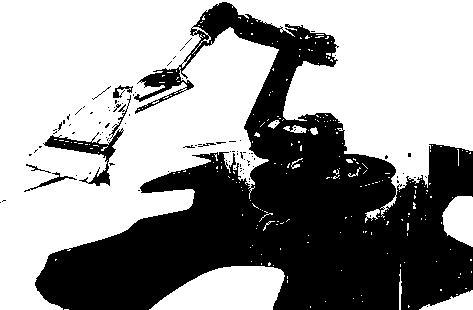
It’s interesting that some of the most popular interpretations of this piece are the furthest from its original meaning. The description from the Guggenheim Museum, its container, states that it works to “examine our increasingly automated global reality, one in which territories are controlled mechanically and the relationship between people and machines is rapidly changing.”
How, then, did we get from automation to existentialism?
Hypercritic calls the piece a depiction of a “Sisyphean task;” one that is worked on endlessly without completion, ever. The emotions arising from such tasks speak to the young demographic that clenches their jaws through endless job applications; that cries while trying to find their footing on an ever–changing world; that can only seem to relate how point less life seems to be through a robot exhibiting nearly human qualities.

This art piece is hardly the first in which viewers felt a true connection with a piece that seemingly summed up their
tion. In it, eighteen straw figures uphold a table with a singular ball. Each time the ball nears one sculpture’s edge, they stand in an attempt to claim it for themselves, only for the ball to roll to the other side. Choe himself stated the work is open to interpretation, yet many connect it to representations of modern–day social dynamics; among such, a constant pursuit of success.
There’s a recurring theme in contemporary art. People can interpret it however they want, but the primary, 20–something demographic of contemporary art continually relates to the sense of helplessness in these entirely non–sentient beings; whether they be robots or straw people.
The theme of existentialism is nothing new to art. However, we often get caught up in our dread of the future and forget the beauty of youth. There’s some- thing special about the future being unknown, and an
ROUND TABLE
Choe U-Ram
tention—Fryd
Frydendahl’s “Salad Days” exemplifies such. Her photo book captures the simple, forgotten things about finding your real–world footing: the innocence, the lack of conviction, and above all else, the youthful
We attempt to feign confidence about our lives and forget that we’re allowed to be ignorant of what the future holds. We’re allowed to be clueless sometimes. When entering adulthood, we’re once again like toddlers, learning how to put one foot in front of the other. It can feel frustrating. Lonely. Dejecting. Yet, modern art does well with exemplifying these exact struggles; it’s only natural, then, that we form connections to such pieces that can often tread a very personal line.
Though, it helps to know that there are others just like us: others merely watching a robot unable to help itself; or squinting to understand Sisyphean straw figures; or decoding some other art piece that, though inhuman, somehow captures the complexity of what it means to be such a being. -
CAN’T HELP MYSELF
Sun Yuan & Peng Yu
CULTURE
Photo courtesy of the Guggenheim
Photo courtesy of Kim Mariia
“How to Spend Time on What You Value” —from How to Build a Happy Life
We’ve all been there. Up till 3 a.m. working on a project you couldn’t care less about, just ready to submit and get it out of your system. But if you could, what would you spend that time on instead? Maybe you’d catch up on sleep or finally read that book that’s been collecting dust on your shelf. In a culture that constantly prioritizes business, it’s easy to get caught up in the cycle of adding more and more to your Google Calendar until it begins to resemble a Tetris tower doomed to game over. But Harvard Business professor Ashley Whillans asks us to reconsider how we spend our time—and why we spend it. As we graduate and enter the real world, our weekends and evenings are ours to use as we choose. Without clubs or parties, how will we spend our time in the adult world?
“The Science of Quitting”

—from A Slight Change of Plans
Whether it’s a relationship, a job, or Grey’s Anatomy, it’s hard to know when it’s the right time to walk away. Annie Duke, a former Penn Ph.D. student, has some insight. After leaving her Ph.D. program due to chronic burnout, Duke found her calling as a professional poker player. She shares her insights into knowing when to walk away. Perhaps this podcast can offer the answer to the most important question of adulthood: When do you throw out last week’s leftovers? In a literal and metaphorical sense, of course.
Self–Help Soundtrack: Podcasts to Get You gh Adulthood
 By NORAH RAMI
By NORAH RAMI
Adulthood is turning on a podcast. The choice of the monotone voice of NPR over the melodies of Taylor Swift. Tuning into the affairs of the economy instead of dancing to your main character soundtrack. Listening to words of wisdom rather than singing along to those lyrics you know so well.
But there’s more to podcasts—and adulthood in turn. There’s true crime, gossip columns, and the infamous personal favorite, self–help. After all, nothing helps you feel more like a put–together adult than walking to the street with your tote bag and listening to the tips for personal enlightenment. Who cares that you’re twenty minutes late to work?
Growing up is full of new challenges, from moving in on your own to deciding what to cook for dinner. While 30 minutes can’t solve your inevitable quarter–life crisis, these podcast episodes will offer you nuggets of advice for the toughest days.
Illustrations: Collin Wang

STYLE
While you’re SABSing in the real world, give this round–up of self–help podcasts a listen, and feel just a little more grown.
“Stay in Your Own Lane”
—from Reinvented After 40
Though I’ve gotten used to the fact my mom will send me podcasts without context, I was still surprised when she sent me one with the very specific target audience of menopausal women. While I have yet to start my midlife crisis (I am hoping this is just a quarter–life crisis), I found plenty of wisdom for my own life in this podcast. The honest fact is this: Adulthood can be lonely. Whether you’re just starting out living on your own or moving in with roommates in New York, it’s an entirely different social atmosphere than college. Part of learning to adapt is reassessing your relationship with yourself. After all, you’re the only person who can make you happy. And maybe Michael B. Jordan, but I checked and he’s pretty busy for the next few years.
“Conquering Failure in Your 20’s”
—from The Psychology of your 20’s
I’d been listening to The Psychology of your 20’s since I was sixteen as a means of “prepping” for what I had been told would be the most important decade of my life. Sure, I was a neurotic teen, but I think universally, it’s easy to be anxious about setting yourself up for a “perfect” post–grad life. But after many trips and stumbles, I’ve found that no amount of self–help can cushion you from inevitable failure. That’s life. But if failure is inevitable, then the only thing we can do is prepare ourselves to be able to meet failure head–on. Understanding our new relationship with success and disappointment is the first step towards deconstructing the difference between our school environment and the real world. After all, in adulthood, failure means more than a 68 on a math test.
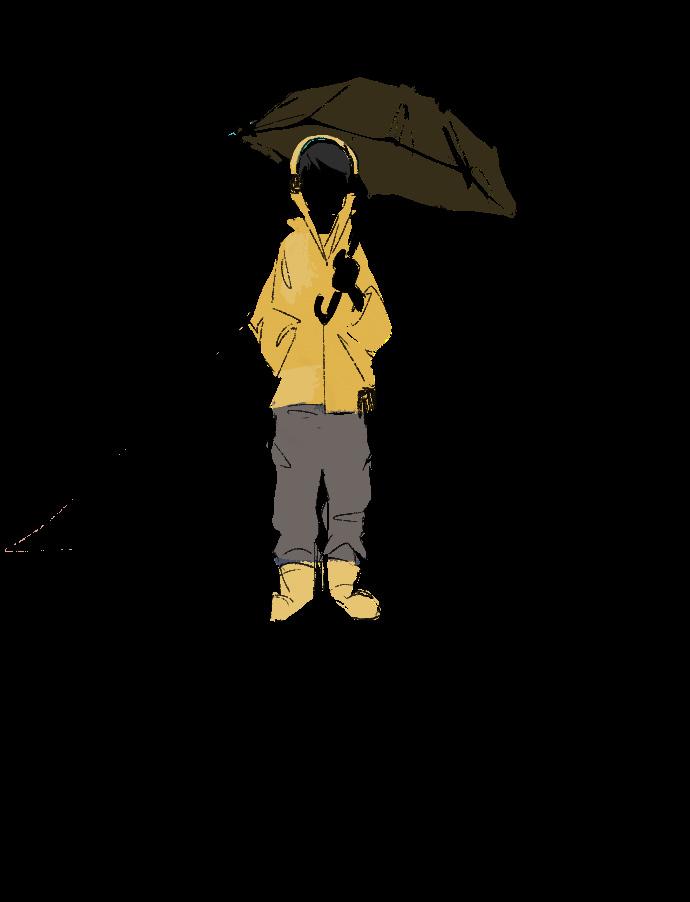
“Who Do You Want to Be?”
—from
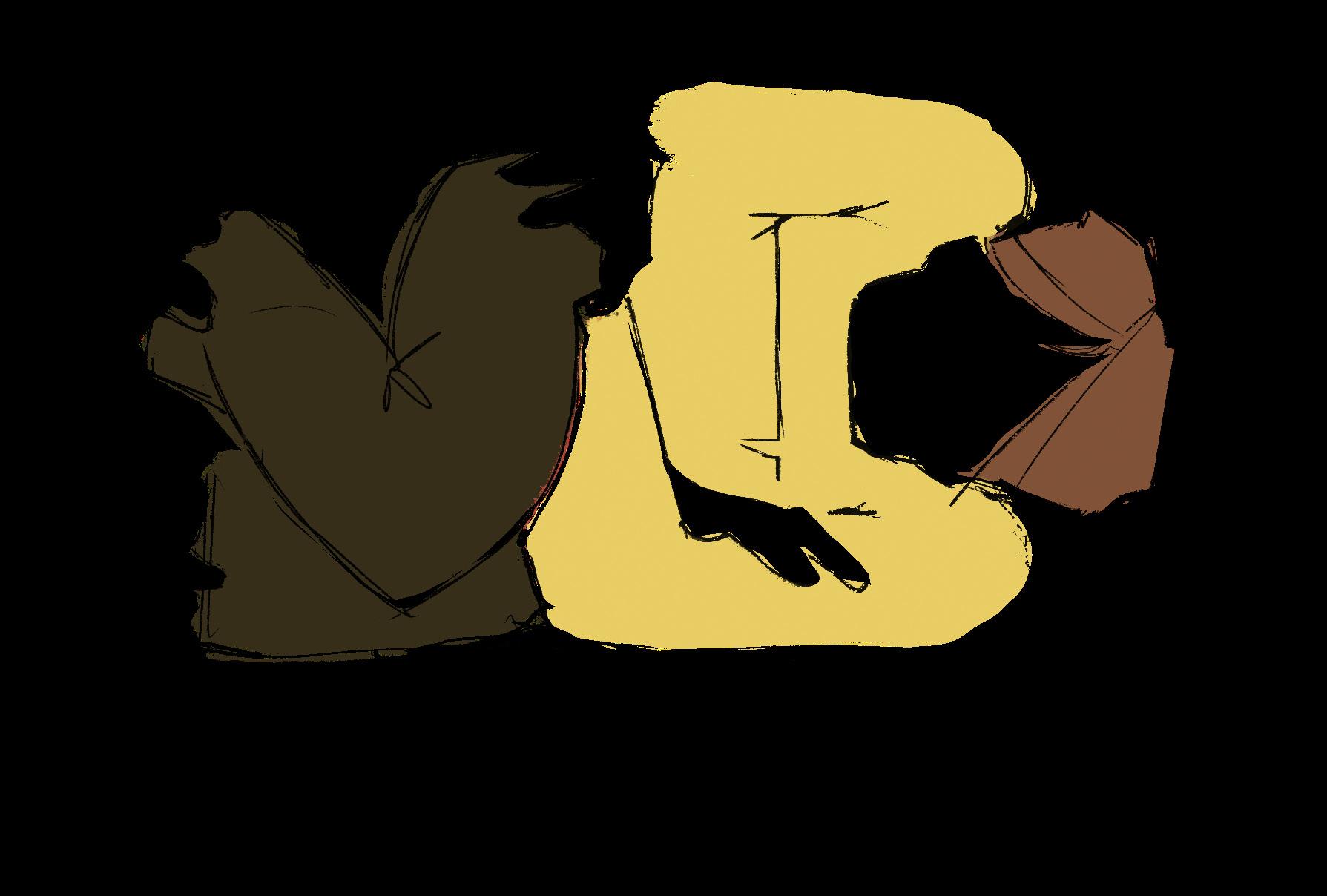
Hidden Brain

When we had to draw our future careers for our kindergarten show and tell, I (much to the consternation of my mother) scribbled a huge question mark on my canvas. Fourteen years later, I am still living in question mark territory. Whether you’ve wanted to be a dentist since you were five or are still grappling with the question of “What do you want to be when you grow up?”, this podcast takes a scientific approach to find your calling.
Psychologist Ken Sheldon studies the science of decision–making and values in order to understand how people can find a path aligned with their happiest selves. Spoiler alert: you may have known the answer deep down all along.
MAY 2023 41 #ADULTING
Composing the Future with James Diaz
Ph.D. student James Diaz leans into the avant-garde as he subverts the typical expectations of Western classical music.
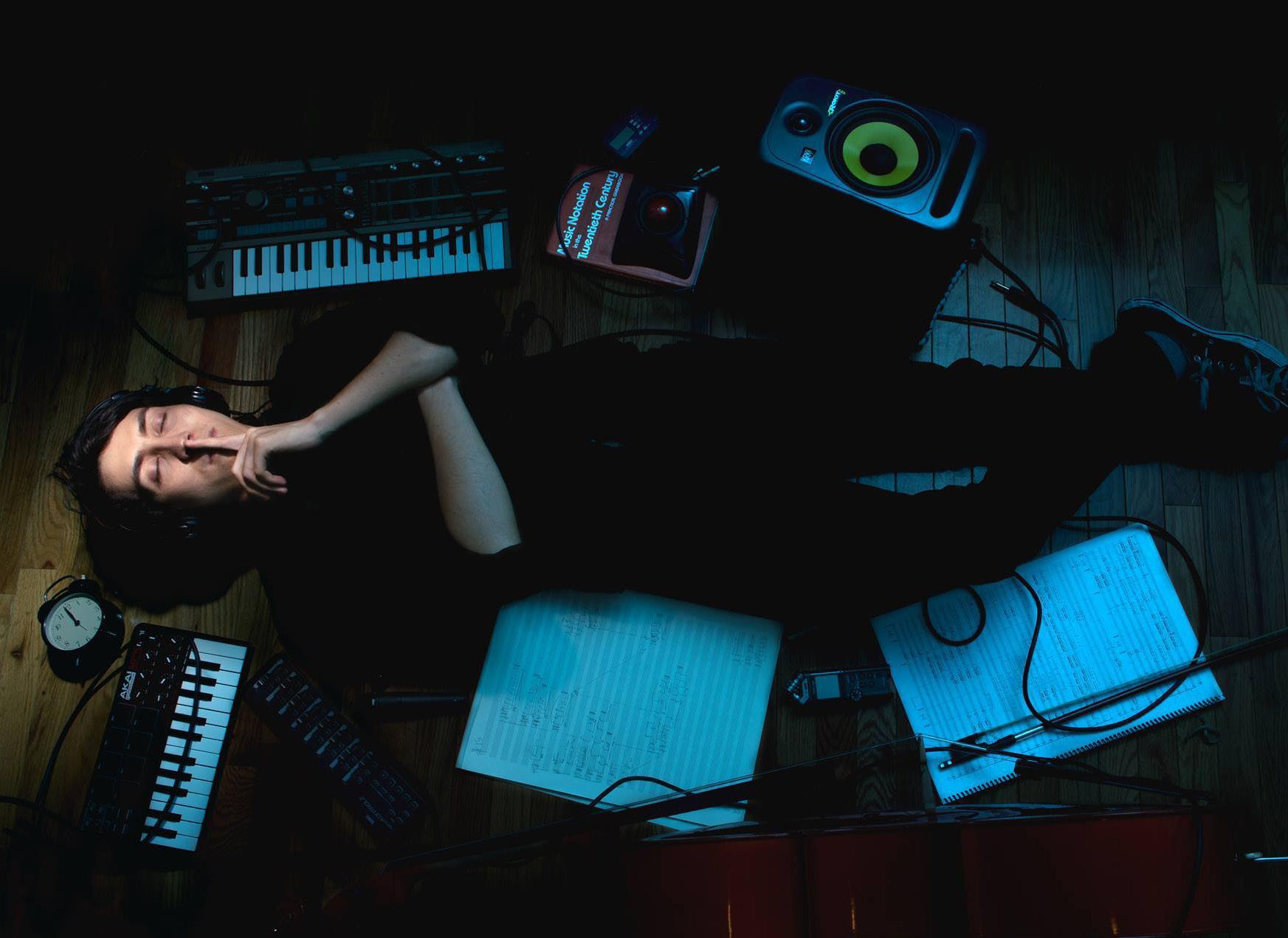 BY VIKKI XU
BY VIKKI XU
34 TH STREET MAGAZINE 42 MUSIC
Illustration: Callia Thornton
What started as a sophisticated night at the ballet quickly descended into a near–riot: an audience throwing objects at the stage, shouting over an orchestra, and breaking out into fights. This infamous night was the first premiere of Igor Stravinsky’s The Rite of Spring, now remembered as one of the most controversial performances in music history. Stravinsky had broken all the rules of what was considered good composition. Yet now, this piece is ubiquitous in concert music, and is to be performed this year by the New York Philharmonic and The Philadelphia Orchestra. Throughout history, musicians have been experimenting with composition and pushing the definition of concert music, even amid controversy. James Díaz, a fifth-year Ph.D. candidate in music composition at Penn, is part of that history— integrating electronic and modern sounds into classical music. Because he started his music study on a small digital keyboard, his composing process was heavily influenced by electronic music production. He only realized that he had a non–traditional background after he arrived at Penn. “The more I started getting to know other people, I realized that I was doing something that is not that common. But I was like, this is common if you see it from the electronic music or production side.”
Díaz, who was born and raised in Columbia, worked a nine–to–five
accounting job right out of high school. There were no artists or musicians in his family, and he learned how to play piano on a tiny digital keyboard. At 19, quickly becoming bored of his office job, he began putting more time into studying not only piano, but music theory. During this time, he also discovered electronic music production. “That’s how I [did] it from the beginning. I embrace the computer. It has limitations, of course, but also it opens many other ideas.”
At 20 years old, he was admitted into the National Conservatory of Music at the National University of Colombia as a piano student. When his piano professor suggested that he was “more of a composer than a pianist,” he decided to study composing seriously.
In Colombia, where there are a lot less opportunities for classical music, Díaz felt like his only option was to compose for orchestras. “In Colombia, classical music is something that is still developing in a way... usually it’s just the orchestras...and the universities, but there is almost nothing in between for young composers.” In 2012, the National Symphony of Colombia played one of his pieces through a program for young composers. When he watched them rehearse the piece for the first time, he was astounded. “It was like a wall of sound...and it was something that I created. And since that day, I commit to [writing] a piece almost every year for orchestra.”
Still, people have tried to label him as an orchestral composer, which he rejects. “I write for orchestra. But I’m not an orchestral composer. Because that goes back to traditions that I don’t really belong to.”

After completing a Bachelor’s degree at the National University of Colombia and a Master’s degree in composition at the Manhattan School of Music, he came to Penn to complete a Ph.D., also in composition. Moving to the states was a significant shift for Díaz. These institutions are arguably more fixed in their history and traditions than any other type of modern music performance. Musicians begin training at a very young age, and across these institutions there is a formal repertoire of composers and techniques that must be internalized.
Orchestras and educational institutions tend to stick rigidly to traditional values, but as an outsider, it is easier for Díaz to question the systems that have been taken for granted. “It’s very difficult for somebody who doesn’t have any idea [of professional classical music institutions], but at the same time, it kind of frees you, because you don’t really have any attachment.” His Ph.D. thesis at Penn continues his experimentation with musical norms, It includes a studio album, titled “[speaking in a foreign language]” featuring violinist Julia Jung Un Suh where he imagines the violin as an electronic synthesizer rather than an acoustic instrument, bringing a new sound to violin music.
As music evolves, classical music institutions are fundamentally resistant to engaging with living composers and programming new pieces. Díaz expresses some frustration with this roadblock. “[Classical music institutions are] literally like a museum. They present you something that is one hundred, two hundred years old, and they have to keep that tradition. So when do [they] also play what is new?”
As part of a movement to change the exclusive nature of the concert hall, Díaz was chosen as one of the inaugural composers for this program Composing Inclusion, a joint initiative in New York which seeks to bridge the gap between professional and rising musicians. His piece for orchestra, titled ”and does the Moon also fall,” will be performed on May 6, 2023 at the New York Philharmonic’s Young People’s Concert, which reimagines Newton’s gravitational theory through music. Like Newton himself, Diaz leaves us to contend with the known and unknown.
Whether it’s in gravitational theory or electronic violin music, boundaries must be pushed to make space for new discoveries. Díaz’s work pushes the audience to question the fabric of our reality and embrace the possibilities that lie before them, like Newton did centuries ago. “We are always in movement,” says Diaz. “We need to get out of our narrow perspective.” k
CULTURE MAY 2023 43
Kali Uchis’ Spiritual and Sensual Journey in “Red Moon in Venus”
 BY HANNAH SUNG
BY HANNAH SUNG
Hot girl summer came early thanks to Miss Kali Uchis. Her third studio album—Red Moon in Venus, released on March 3—is classically her: sultry and airy vocals, stocked with the most relevant features in the industry, such as Omar Apollo, Summer Walker, and her boyfriend Don Toliver. Isolation traditionalists fear not—Red Moon in Venus takes after her revolutionary debut album. She doesn’t shy away from her highly feminine and spiritually sexy powers, which has effectively altered her listeners, colloquially called Kuchis. Multiple TikTok users claim they have glowed up after listen ing to Uchis, called “the Kali Uchis effect,” with proof to support it.
Uchis infallibly combines sex and love in Red Moon in Venus, typically treated in music as two opposing subjects. “in My Garden…” begins the album with a simple “I love you,” to the audience or her boyfriend— or both. Overall, “Love is the message,” Uchis said of the album. “The blood moon can send your emotions into a spin, and that’s what I felt represented this body of work best.”
“I Wish You Roses” is proof of Uchis’ era of healing and wanting the best for an ex. “Nev er thought I would be without you /
I wish you love / I wish you well,” she croons. One of Uchis’ strengths is her worldbuilding in her songs through the use of floral imagery. She creates the lush soundscape that translates past the visuals of her music video, one scene in which she recreates that visually aesthetic, yet perverse scene in American Beauty Sans a creepy Kevin Spacey onlooking, Uchis is present with just her flower petals, in a reclamation of her femininity. Overall, Uchis’
mantra for this album is love and peace, while also allowing the past to be just that. “You’re gonna want me bad,” she sings. “You know we can’t do that / You know you can’t do that.” Sometimes it’s best to love and let go.
“Worth the Wait,” featuring Omar Apollo, follows the same tempting beat of her many collaborations (think Tyler, the Creator or Bootsy Collins). Effectively ending the Freudian Madonna–whore complex, “Worth the
34 TH STREET MAGAZINE 44 MUSIC
The R&B and pop singer is the divine feminine, and she’s sharing her secrets with the rest of us.
Illustration: Erin Ma
Wait” contains lyrics including “Deep in my knees I got weak / Baby, you know I’m a freak,” and also “Quit tellin’ me you wanna put a baby in me / If your affection for me’s truly only skin–deep.” In the end, the singer explains, “I don’t wanna end up just another broken family.” Uchis has a gift of encapsulating multifaceted relationships, through her deceptively simple and infectious lyrics.
The ‘70s groovy style of “Love Between…” can be attributed to Uchis’ interpolation of “Love … Can Be So Wonderful” by The Temprees. Uchis changes her chorus from the 1972 song from “Love between a boy and girl can be so wonderful” to “Love between two human beings / Can be so wonderful.” In an effort to degender the lyrics, Uchis creates a love ballad fit for the inclusivity of 2023, while taking listeners back to the soulful and suave sounds of psychedelia.
“Fantasy,” featuring none other than her man Don Toliver, gives both of their fanbases an insider view into their relationship. Rather than giving Toliver only one verse, Uchis splits
the song with him equally, creating a dialogue between the two. “Yes, we made mistakes / (Mistakes), now, can we make / this right?” the singer asks. To which Toliver responds “Lemme make it right.” Later he raps, “This here my fantasy / I wanna start me a family.” The answer to having a healthy relationship? Uchis and Toliver tells us in “Fantasy”: a healthy conversation in which both parties are involved. If only all arguments sonically sounded this good in real life.
Unlike her Spanish–heavy record from 2020, Sin Miedo (del Amor y Otros Demonios), Red Moon in Venus is primarily in English. But in “Como Te Quiero Yo” and “Hasta Cuando,” the Colombian–American singer skillfully traverses between the two. Uchis sings in the previous song “Como te quiero yo / I want you constantly, eternally, unconditionally.” Between English, Spanish, and her use of moans as ad–libs, Uchis unifies all her languages.
One thing is for sure, though: Uchis knows her worth. In “Moral Conscience,” she sings,
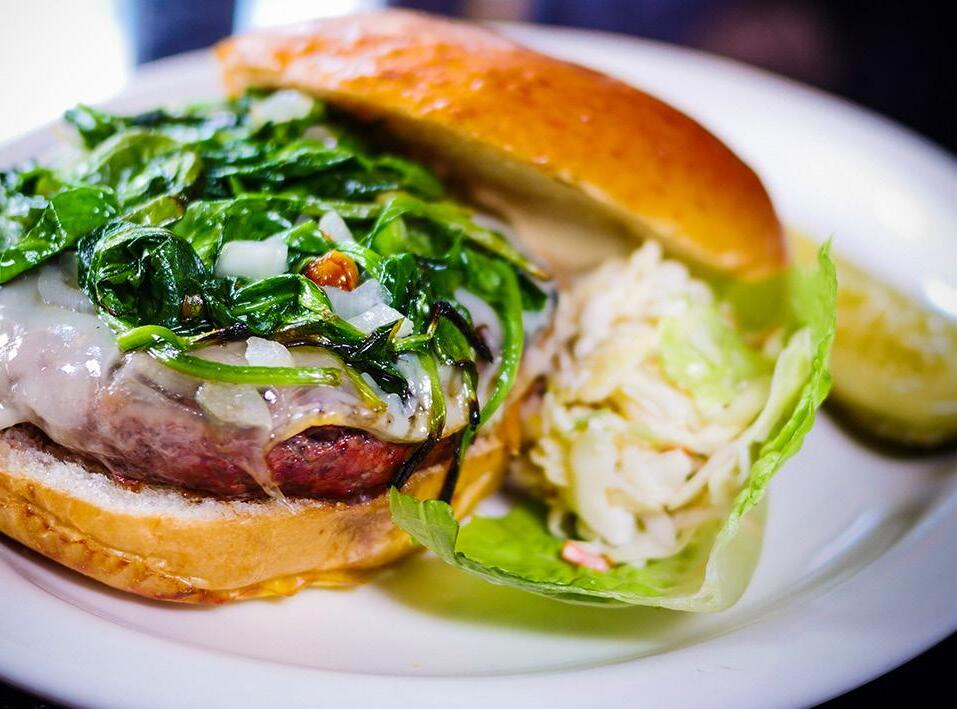

“One thing about karma, that bitch will find you.” When her ex, or someone else that harmed her, is free of distractions, “You’re gonna feel it / When you’re all alone.” In one of her most spiteful lyrics, she sings, “Yeah, everyone’s replaceable / But not me, though.” In “Deserve Me,” featuring Summer Walker, Uchis says, “You’re so manipulative / I need to know that you’re so manipulative.” Uchis is blunt and proud, which makes it that much easier for fans to sing along without having to decipher convoluted lyrics.
The standout song of the album is “Moonlight,” the sound of the TikTok glow up trend. Uchis sings “I just wanna get high with my lover / Veo una muñeca cuando miro en el espejo.” She serenades us about seeing a doll reflected back to her when she looks in the mirror, making it the perfect song to get ready to before going out. Uchis not only has confidence and self–love, but also has the infinite wisdom to share with her fans.
Through Red Moon in Venus, may we all have a spiritual and sexual reckoning—Kali Uchis style. k
CULTURE WEDNESDAYS 1/2 PRICE BURGERS 11:30AM - 4PM MONDAY - FRIDAY HAPPY HOUR | 3-5PM $6 MARGARITAS, COPA LEMONADE, MOJITOS 40th & Spruce St., University City • 215-382-1330 • copauc.com
Practically Picture– Perfect: The Problems with CGI
BY ISAAC POLLOCK
“Run. Run!” shouts Anna Torv’s Tess in episode 2 of The Last of Us. Ellie (Bella Ramsey) scrambles away, army—crawling out of the path of a rampaging, fungus—mottled zombie. She hides, waits for Joel (Pedro Pascal), and breathes shakily. And the second the two of them make a noise, the zombie comes at them again. Its face was clearly once human, but is now overrun by a fan–like pattern of mushrooms. Its colors, albeit muted in the dim light, are a fantastic mix of blues, oranges, and beiges, all toeing the line between believable naturalness and the disturbing unnaturalness of the undead. Its fungal gills, though made of liquid silicone or rubber, look like they grew deep in a haunted forest. If it wasn’t so terrifying, it would almost be beautiful.

The Last of Us is just one show that utilizes practical effects to the best of their abilities nowadays; many movies in recent years have been praised for employing practical effects, from stage makeup to stunt work to puppetry. The Last of Us’s popularity, though, has ignited a conversation about the benefits and downsides of practical versus computer–generated effects,
a battle that has been ongoing since the advent, practically, of film itself.
Firstly: What even are practical and computer–generated effects? Practical effects are visual effects done practically—that is, with models, makeup, and anything else that you can hold in your hand. Computer—generated effects, on the contrary, encompass visual effects (VFX), the creation of an effect through the combination of digital technology and something practical, and computer–generated imagery (CGI), digital characters, landscapes, and more made whole cloth from an algorithm.
Ever since the invention of film, people have been pushing the boundaries of what can be depicted when recorded. Anyone who’s taken CIMS 1010 has heard the story of audiences being terrified when the Lumière Brothers debuted a film of a train moving at them, as they suspected the train might ride off the screen and into the space where they were peacefully sitting and watching the film. And they’ve had to watch A Trip to the Moon, a 1902 French flick that utilized overlays and other (old now, but revolutionary at the time) editing and staging technologies to
create the effect of, for example, women’s faces in the sky.
Continuing down the syllabus, a fantastic example of early practical effects comes with Nosferatu, where the eponymous vampire’s inhuman appearance was created through classic theatrical makeup techniques (as film grew out of a tradition of live theater). From there, practical effects grew in complexity as the tradition of cinema cemented itself and as materials became more diverse, more easily accessible, and better. Eventually, we ended in the realm of movies such as The Shape of Water, a movie that, even if you haven’t seen it, you likely know for being about a woman getting it on with a fish. And that fish is gorgeously, practically constructed.
But, of course, makeup wasn’t the only thing that changed over time due to technological innovations and a cementation of industry standards. With computers comes digital manipulation (and, again, editing has been a common practice since the advent of film as entertainment itself), and thus, CGI and VFX.
Even if you, like myself, are not a particularly tech–savvy person, it’s incredibly easy to spot
34 TH STREET MAGAZINE 46 FILM & TV
Do practical effects still have a place in an increasingly computer–generated media landscape?
when a greenscreen is poorly utilized, or when a CGI’d character looks a little too computer–generated. That being said, it’s also incredibly effective when CGI pays off—there’s a reason Avatar is the highest–grossing film of all time.
And CGI is inarguably an industry staple at
treatment of workers in feature–length films or serialized television. Practical effects and well–used VFX are instrumental in adding flavor to shorter–form and/or lower–budget productions. Even YouTube sketch comedy could utilize practical effects in conjunction

This is not an argument for doing away with helping out in post. On the contrary— VFX can be wonderful, and is incredibly useful in a plethora of applications. But help from computers shines best when it’s not noticeable; when, instead of being the star
this point. Think of pretty much any blockbuster movie that’s come out in the past ten years, and you can imagine at least one scene in it that relies heavily on CGI. Nowadays, the fact that The Last of Us, one of the most talked—about shows in the current zeitgeist, is so practical–heavy, is much bigger news than yet another movie or show having scenes made entirely from mo–cap and computer imaging.
Oversaturation aside, there are countless stories that resurface constantly about the mistreatment of VFX artists. VFX artists and CGI creators are not unionized (though there have been pushes within the industry to get a union going), and workers voice their complaints consistently online about being expected to work insane hours under short, strict deadlines. These workers oftentimes cite Marvel movies as their main sources of stress, due to the franchise’s arguable overuse of CGI in creating their films and the sheer amount of content put out by the MCU every year, particularly in their current stage of franchising.
The benefits of practical effects aren’t just applicable to heart, realism, and better
with VFX to enhance their content. Functioning as a lower–barrier access point, the usage of both allows space for more creativity without requiring anyone to purchase a subscription to Final Cut Pro or Adobe Premiere Pro, which is especially important in an age where people are incentivized to post their work online. Without creating space for practical effects, are we really creating space for up–and–coming creators, or for short–form content?
Also, at the risk of sounding like quite a traditionalist, it’s simply important to hold onto crafts. Practical effects take time, effort, and human handiwork. They are an artform, and they deserve not only to be respected as such, but to be upheld as their own tradition. An overreliance on CGI leads to miming in front of an emotionally flat, blatantly obvious greenscreen. Real engagement with CGI for the technology it is, rather than treating it like a magical panacea–esque crutch, can instead lead to some stunning results. Yet in an industry dominated by profit and quantity, it’s rare that CGI is used as anything other than a flimsy cheat code.
of the show, it’s that final touch that makes everything sparkle.
A fantastic example of this is Oscar–winner Everything Everywhere All at Once. In this movie, VFX and practical effects go hand in hand— VFX is largely used to erase traces of practical work. For instance, it enables the editor to digitally remove the stunt wires holding up Jamie Lee Curtis as she leaps down to attack Michelle Yeoh, or create a background in post from a compilation of externally–captured street footage imposed behind Yeoh as she flies backward through the multiverse.
So, where does that leave us? We’re traversing a media landscape oversaturated by CGI, one where a person can earnestly tweet that they think that the only alternative to CGI is to “build spaceships and go NOT ONLY to space but to other planets?” In this post–practical world, is there room for non–computer–generated effects? I believe there is, and the popularity of media such as The Last of Us, which has received praise for its heavy use of practical effects, makes a strong case for that. It really doesn’t need to take advanced technology to transport us to the stars. k
MAY 2023 47 CU L T U RE
Graphic: Janine Navalta
Frogs and Flowers: Exploring the sculptures of Rittenhouse Square
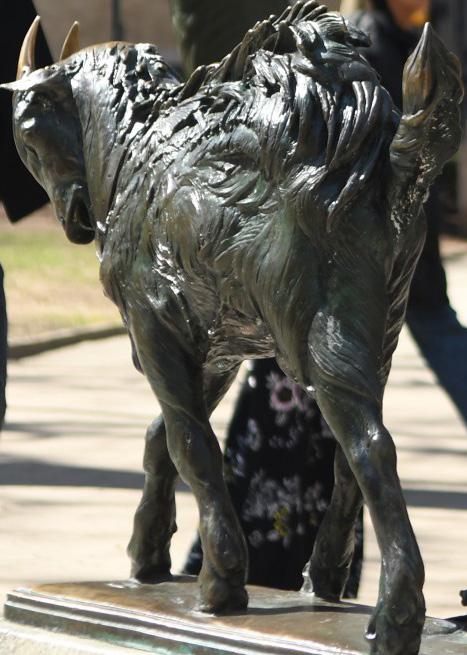
Maybe the most important art isn’t in museums.
BY JOSEPHINE BUCCINI
It’s 5:30 p.m. on the first 60–degree day in March, and Rittenhouse Square is packed. People just getting off work walk their leashed dogs, ranging from tiny white designer ones to mutts that reach my hip. Parents push strollers as children run around without jackets for the first time in months, while friends sit on benches tagged, “In Memorial Of.” An artist rests with his back against the fence, willing passersby to purchase the paintings that sit alongside him. Another plays the flute.
I’ve walked through Rittenhouse Square innumerable times since my acceptance to Penn, and a few before that. I know stories about the old buildings that overlook the greenery and have a couple of favorite menu items from the fancier restaurants that line the square. I even know the exact spot in it where my grandparents got engaged. But I know nothing, absolutely nothing, about the art within it. And I’m determined to find out.
At the southwest entrance of the park, two sand–colored greyhound sculptures welcome visitors and guard the park. The Association for Public Art (aPA), the authority on caring for and interpreting public art in Philadelphia, tells me that these were donated by friends and family of Henry P. Mcllhenny, a longtime resident and supporter of the square. Mcllhenny was a prominent member of the arts community in Philadelphia, serving the Philadelphia Museum of Art for 50 years first as curator of decorative arts, then as chairman of the Board of Trustees. Apparently, Andy Warhol called him “the only person in Philadelphia with glamor.”
The Evelyn Taylor Price Memorial Sundial features two children holding a sunflower between them. The head of the sunflower serves as a working sundial with the inscription, “As the hour passes, friendship abides.” The sculpture was given in memory of Evelyn Taylor Price, who was president of the Rittenhouse Square Improvement
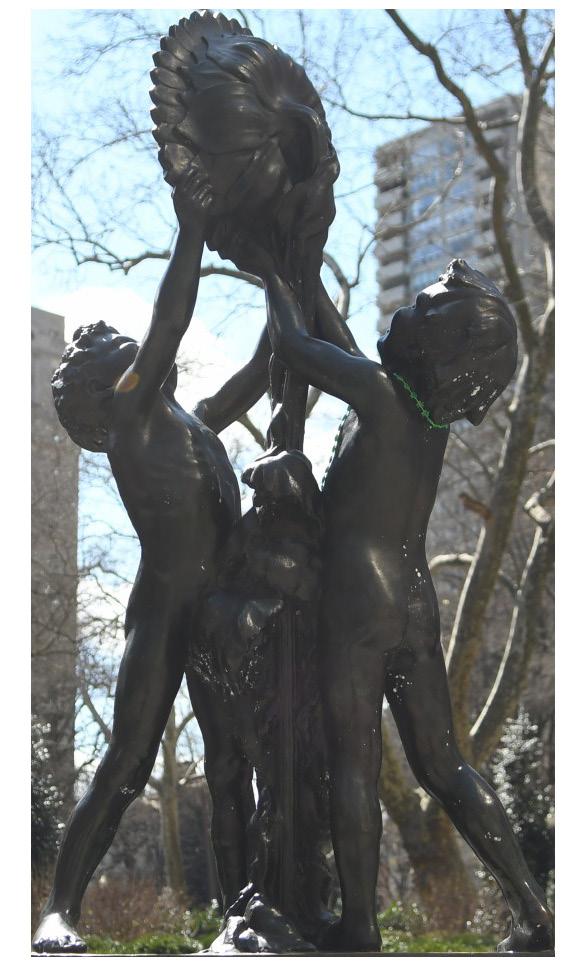
Association and the Flower Market Association for more than twenty years. The Flower Market Association was conceived for charity—a way for people to support the square and to promote civic engagement by purchasing flowers.
I stop by the next sculpture I see: Giant Frog by Cornelia Van Auken Chapin. The frog, about three feet tall, rests peacefully on a rock, enjoying the nice weather. I meet a man named Christian resting with his bulldog, Ziggy, beside it. He tells me this is Ziggy’s favorite sculpture, but he personally likes Billy the Goat
In 1914, when Eli Kirke Price II, a prominent Philadelphian and then–president of the Philadelphia Museum of Art, saw Billy at a show by the Pennsylvania Academy of the Fine Arts (PAFA), he decided it would be perfect for the square. Everyone else disagreed. The Fairmount Park
34 TH STREET MAGAZINE 48 ARTS
Art Association, the precursor to the aPA, called it ugly, too small, and not “majes tic” enough. But eventually, they forgot about the sculpture, and four years later, the “stubborn” and “spirited” Price got his way. Today, his great–great–grandchil dren appreciate the sculpture, as shown by their imitation of goat noises on the “Museum Without Walls” audio tour.
Perhaps the lack of grandeur that it once was rejected for is what makes it so beautiful. Without a pedestal, Billy meets little ones at their height. I can tell he’s much loved by them—the goat is com pletely covered in sidewalk chalk, and his horns and back have been rubbed to gold from being petted by tiny hands.
This isn’t the original Billy, however. Like a beloved stuffed animal, the first goat came apart over the years. His met al thinned, making him more vulnerable to the elements. After 99 years of living in the square, in September 2018, the original sculpture was retired and an exact replica took its place.
According to CBS News, to celebrate this transition, the city held a retirement party of sorts, complete with a petting zoo and live music. The original sculpture now lives happily just across the street, in the chil dren’s wing of the Free Library of Philadel phia’s City Institute branch.

I watch four children in school uni forms jump up and down on the semi–circular bench that surrounds the new Billy , and include him in their game of tag. I know he’s just as loved as his old twin.
Across from Billy sits perhaps the most recognizable piece of art in the square: Duck Girl, standing in the middle of the fountain. Sculpted by Paul Manship, the work features a young girl holding a duck. Like Billy Duck Girl was also first exhibited at PAFA in 1914, but similarly took a while to find its forever home. It was first installed in Cloverly Park, but was damaged and put into storage at the Belmont Stables in 1956. In 1960, it was rescued by the Rittenhouse Square Improvement Association and found its spot in the fountain.
CULTURE
Photos: Nathaniel Babitts
Cens(art)ship in Student Showcases
The fragile line between creative liberty and offense
BY HEAVEN CROSS
lack curtains do more than just shield the public from art. They represent a divide between the morality of censorship for tastelessly sexual or religious minority pieces, and those who feel that policing
At Macalester College in Saint Paul, Minnesota, an artistic showcase depicting exposed niqab and hijab–wearing women has divided students and propels a debate about censorship. Should the masses be allowed to choose whether to view art that shocks into action, or does asking for “visual consent” kill democratic ideals? Amid the chaos is the solo exhibitionist and the creator of controartwork, Taravat Talepasand. She is an Iranian–American artist who “explores the cultural taboos that reflect on gender and political authority” and demands a conversation about fine art’s role in
The “Taravat” showcase was briefly taken down after student protests. Upon reopening, Talepasand modified her exhibit, adding coverings, content warnings, and a barcode outsourcing a petition by the Muslim student body, requesting that potential viewers respect their religion by averting
This controversy follows a similar event in 2022, taking place in Saint Paul’s Hamline
Erika López Prater, a former professor of art history, lost her position after showcasing a fourteenth–century painting which depicted the prophet Muhammed’s face. This is generally prohibited in the Muslim faith for several reasons, including to avoid depicting the prophet as a god–like figure. This choice struck outrage among the student body, leading to Prater’s removal “without due process.” With a different outlook on the situation, the Muslim Public Affairs Council released a statement in support of the adjunct professor, stating that the painting was shown to students to avoid dispute the misconception of a “monotheistic Islamic culture.”
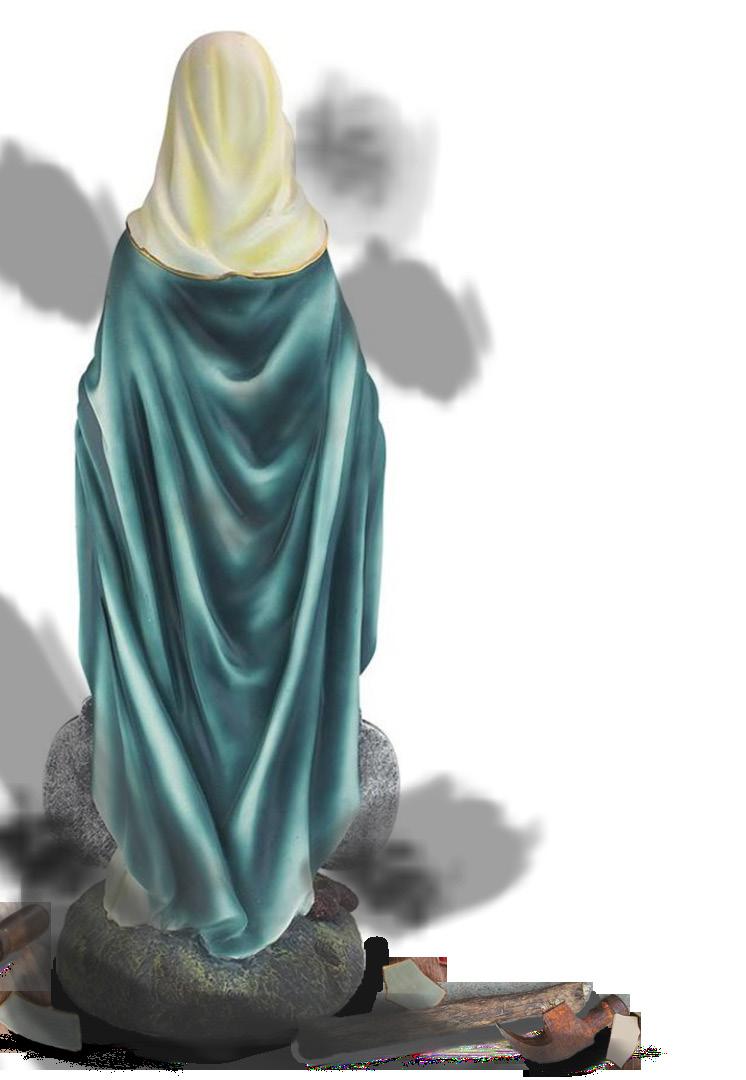
Much of the commentary on “no–exceptions” censorship in the media falls firmly on the side of free speech. A majority of professors at Hamline College moved in support of their dismissed faculty, demanding that the college president leave her role. Dissenters fear that the definition of “offense” will become increasingly oppressive. In the future, there may be a need to take extensive measures to ensure education does not unsettle any student. As a result, controversial, yet considerable, information may be lost.
At the same time, anger over concerning pieces of media persists. A 2010 Tarleton State University play in which Christ would be portrayed as homosexual was canceled. In support of the censorship, Governor David Dewhurst said that “no one should have the right to use government funds or institutions to portray acts that are morally reprehensible to the vast majority of Americans.” This attempt
34 TH STREET MAGAZINE 50
ARTS
Graphic: Cynthia Dong
at a constitutional approach to blocking media is not unfounded.



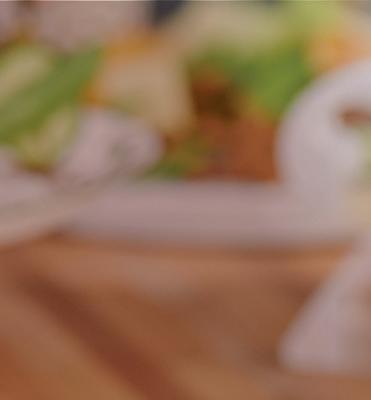


The legal underbelly reflects the disconnected opinions of reporters and college activity. The risk of economic restriction is one strange justification of Dewhurst’s unsuccessful attempt to keep the LGBTQ–lensed Corpus Christi play offstage, as precedented by the 1998 National Endowment for the Arts v. Finley. This law allows the government to exclude funding from art that doesn’t show “decency and respect for the diverse beliefs and values of the American public.” Although indirect, it is reasonable to assume this economic barrier limits the showcasing of smaller artists’ antagonistic pieces. It shows that the government is unwilling to stand behind the controversial ends of free speech. At a publicly–funded university like Tarleton State, college administration must take its government finances into consideration when approving performances. Cases in which college students fight for removal of obscene graphics from their campus are numerous and all–encompassing. Students argue that the images or lectures their school outputs are a direct reflection
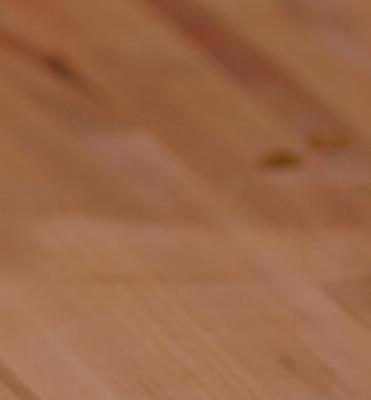




on the student body. Therefore, delicate action should be taken when choosing to invite external speakers (see the cancellation of the Proud Boys’ speech at Penn State this past year), to select books for the curriculum, or to justify the nature of pro–abortion art strewn across the lawn. Young adults are looking for a difficult balance between expression and sensitivity.
In determining whether censorship of art is viable, we must ask crucial social questions. Is crass criticism more acceptable because of the artist’s identity? Is it the responsibility or right of members of a community to publish work that can be offensive to their own demographic? Is it possible to call inactive people to action without the offensive portrayal of a culture? And finally, where is the line between making a powerful statement about a sensitive religious or cultural topic and simply offending an already widely stigmatized audience? As a balance is approached, these considerations will continue haunting viewers and activists, politicians, and creators. Polarizing topics are notoriously difficult to present well.
It is certainly difficult to see the most vulnerable groups targeted by critical or suggestive artwork. Although it’s easy to find examples in the general public of debate in favor of censorship (for better or for worse), the right to freedom of expression has trumped these opinions. While some may argue that there should be a shift towards less polarizing displays of dissent, meek demonstrations rarely stimulate productive conversation. We need to define the line at which artistic liberty ends and unnecessary slander begins, because it is only then that representation of sensitive topics can be done in a way that wins over the right audience.
We currently sit at a stalemate. Taking a step back to survey the gallery yields a more complete picture than an exhibit alone can offer. Tapestries over pieces ask us to make our own choice. The degree to which censorship is enforced depends, perhaps, on American ideals and economic status. Looking forward, we can expect the debate on the legal and ethical considerations of controversial artwork and the role of social perspective to continue for generations. k
CULTURE Join to access the weekly ad, personalized deals & more. Hungry for more deals? Subject to program terms. Visit acmemarkets.com/foru-guest.html for full terms and conditions. Download the app We have all your celebration essentials Order your cakes, flowers, party trays and MORE! Caps off to you!
Salads Smoothies + Shopping Sprees

With more than 30 shops, 40 restaurants, and 15 sports and culture venues, we’re giving you 85+ reasons to stay in University City. With spring on the horizon, SHOP PENN joins a host of conversations on health and wellness, with a little help from hot spots and hang outs revitalizing the way the Penn community and beyond eats, moves, and lives.
Shop Local.
Shop Penn.
#SHOPPENN
@SHOPSATPENN

SHOPSATPENN.COM
Refuel
Musthaves
Reps Refresh +
Wants Needs +


























































 SOPHIE BARKAN
SOPHIE BARKAN






























 By DIANNA TRUJILLO MAGDALENO
By DIANNA TRUJILLO MAGDALENO













 By KATE RATNER
By KATE RATNER








 By ANGELE DIAMACOUNE
By ANGELE DIAMACOUNE




 By NORAH RAMI
By NORAH RAMI




 BY VIKKI XU
BY VIKKI XU

 BY HANNAH SUNG
BY HANNAH SUNG




















